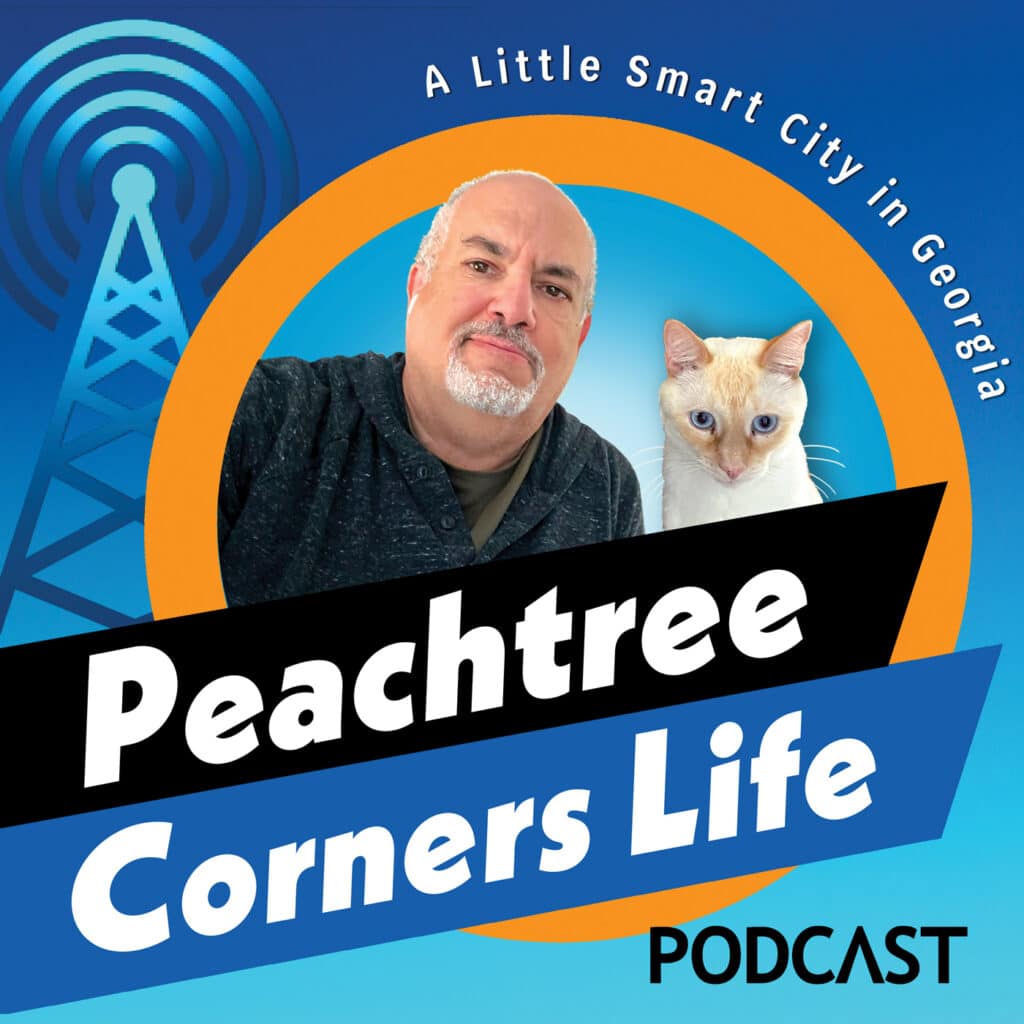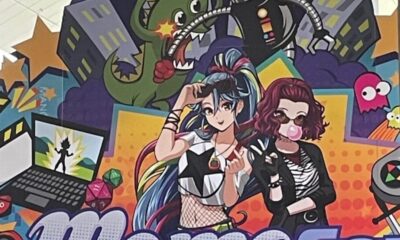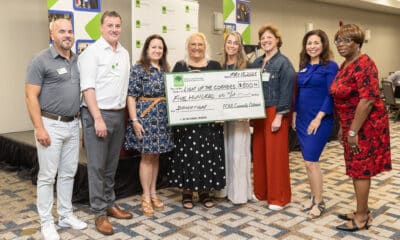Arts & Literature
The 24th Annual Wesleyan Artist Market – Up Close and Personal!
Published
3 years agoon
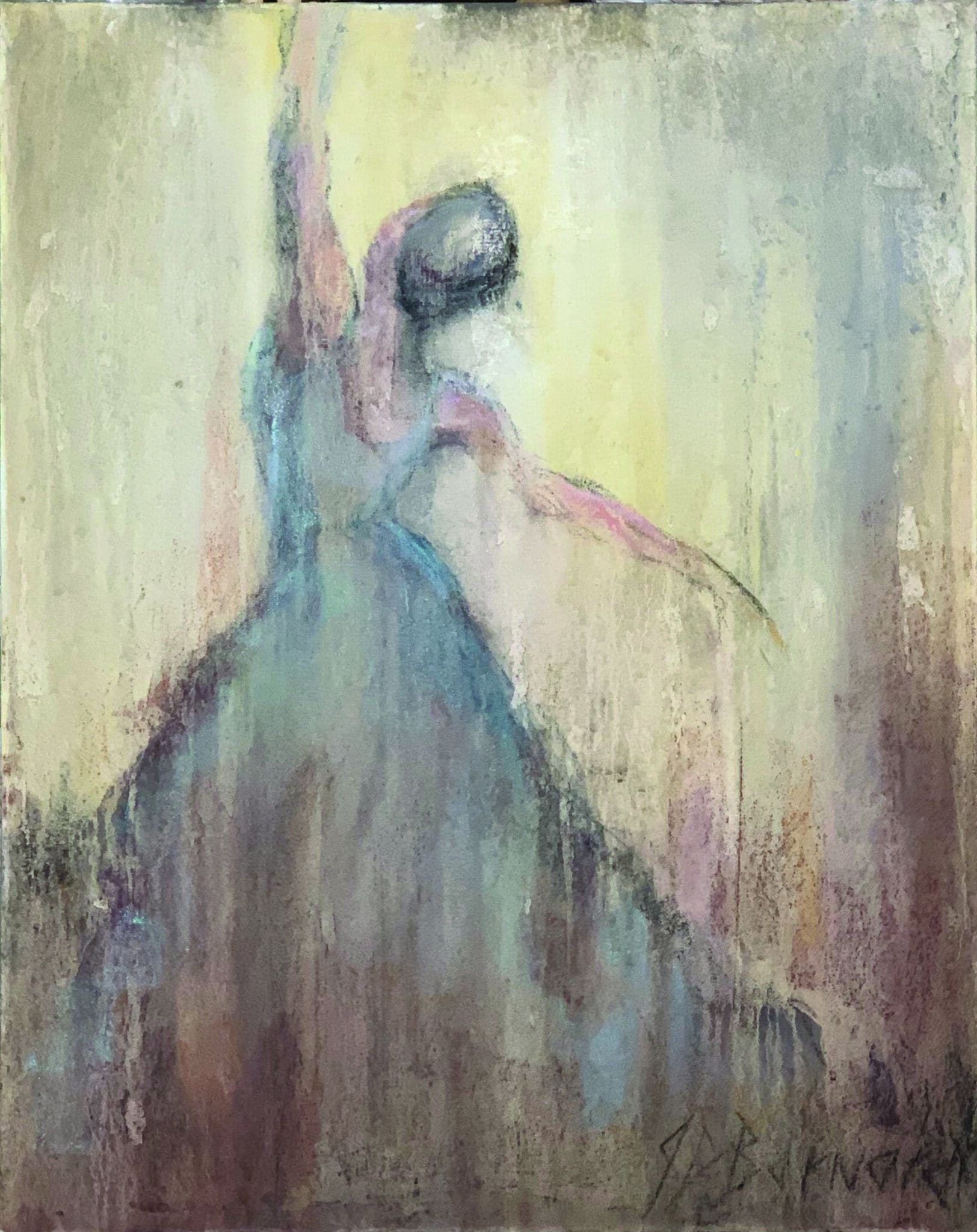
A Spotlight on Three Artists
Springtime in Peachtree Corners and surrounding neighborhoods is synonymous with a visit to the Wesleyan Artist Market (WAM). What better way to find treasures for our spaces than in person, discovering pieces that speak to us while connecting with the artists who share the vision behind their work?
After COVID canceled 2020 and then went virtual in 2021, WAM is thrilled to be back on campus this year. The market runs Friday, April 29, 10 a.m. to 7 p.m., and Saturday, April 30, 10 a.m. to 3 p.m. Admission and parking are free for this family-friendly event.
Browse an array of acrylics, oils, mixed media, watercolors, sculptures, jewelry, pottery, glass and more while enjoying gourmet coffee and treats, all available for purchase.
Participating artists undergo a rigorous selection process, so WAM brings you the best. This year, 80 professionals were selected out of over 100 applicants. Also featured will be the works of 14 talented students.
Prices range from a few dollars to thousands of dollars. There is truly something for everyone. A percentage of every sale goes to support the Wesleyan School fine arts program.
To preview participating artists and for more information, visit artistmarket.wesleyanschool.org.
- Elizabeth Ables
- Kristie Onorato
- Jennifer Barnard
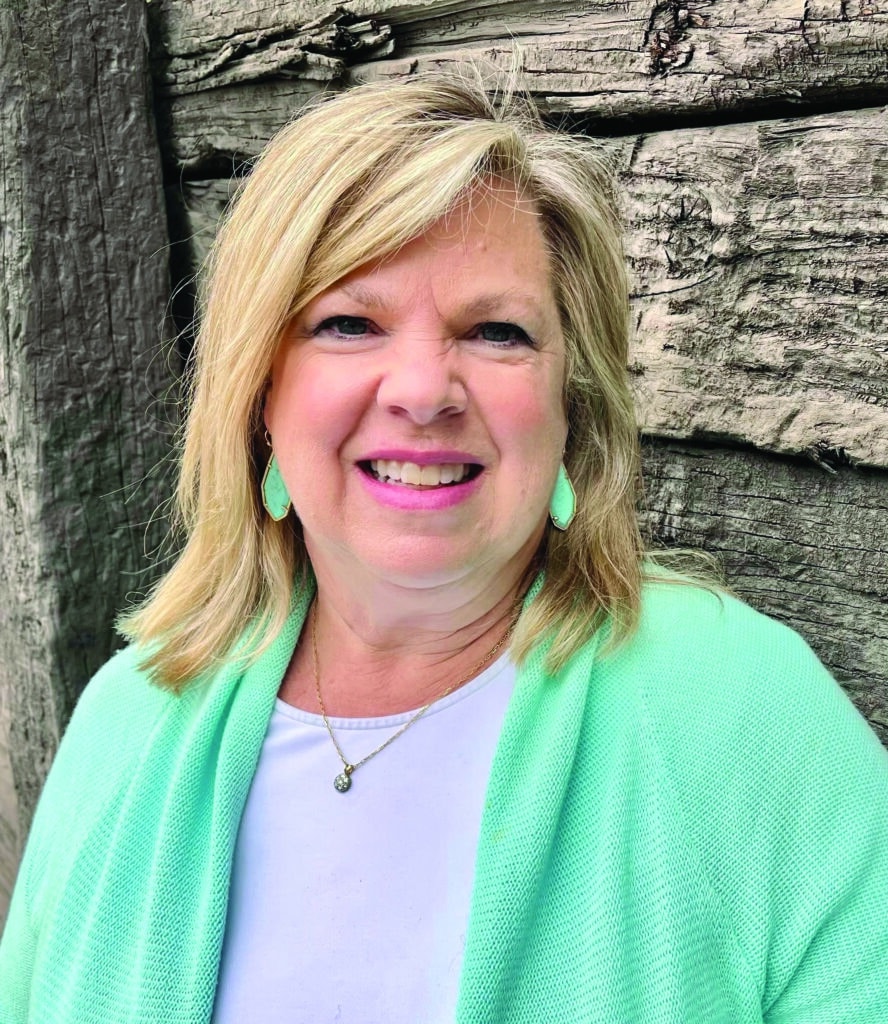
Elizabeth Ables
Stand by your mania to make
Nashville native Elizabeth Ables had classmates with star parents like Tammy Wynette, George Jones, Rony Millsap and Ray Stevens. As a teenager she caught Amy Grant performances at local bookstores before moving to Atlanta. Peachtree Corners has been her home for 28 years.
With a Communications and Sociology degree from Vanderbilt and an Education degree from Brenau, Ables has taught at Wesleyan for 15 years. She considers herself more of a creator than an artist, having dabbled in many different media over the years, from fiber arts, fashion design (particularly children’s heirloom clothing) and quilting to painting with watercolors and acrylics.
Ables developed an affinity for ceramics while guiding students through the toil and joy of turning globs of clarified dirt into something serviceable. “I’ve always been drawn to beautiful, functional art. I used to entertain a lot and wanted unique pieces, so I started creating my own. It feeds your soul when you create something that didn’t exist before,” Ables said.
Art imitates life
A sense of peace and tranquility emanate from her work. Ables finds inspiration in nature, gravitating towards layering glazes in blends of blues and greens — colors that evoke the ocean. She never tires of experimenting to get just the right blue, having long admired the striking hue of Martha Stewart’s Araucana chicken eggs, as well as robin egg blue.
Even her textures are inspired by the natural world. When creating surfaces on her vessels, Ables replicates tree bark and other things found in the environment.
A full-time teacher and busy mother, Ables creates her pottery at Spruill Center for the Arts where she also takes weekly classes, squeezing in workshops whenever she can. At Spruill, a community of artists support and uplift one another.
“I do what inspires me at the moment,” Ables explained. “On a cold winter night, I made a cable knit cardigan sweater-type surface on a vase. It looked like a slouchy sweater because that’s how I was feeling when I made it — I wanted something warm and cozy.”
Led by what inspires her, she leans into her feelings and allows art to become an escape. “I create things that I want to see, that make me happy,” Ables said.
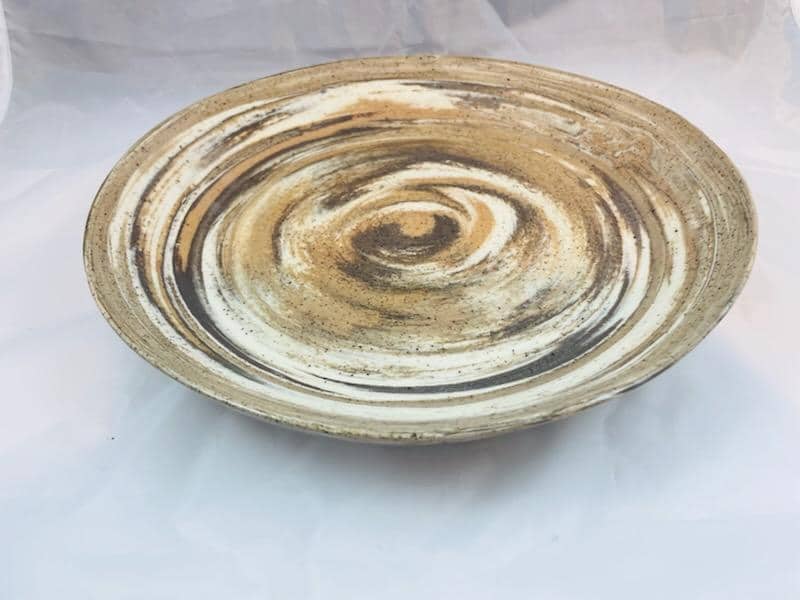
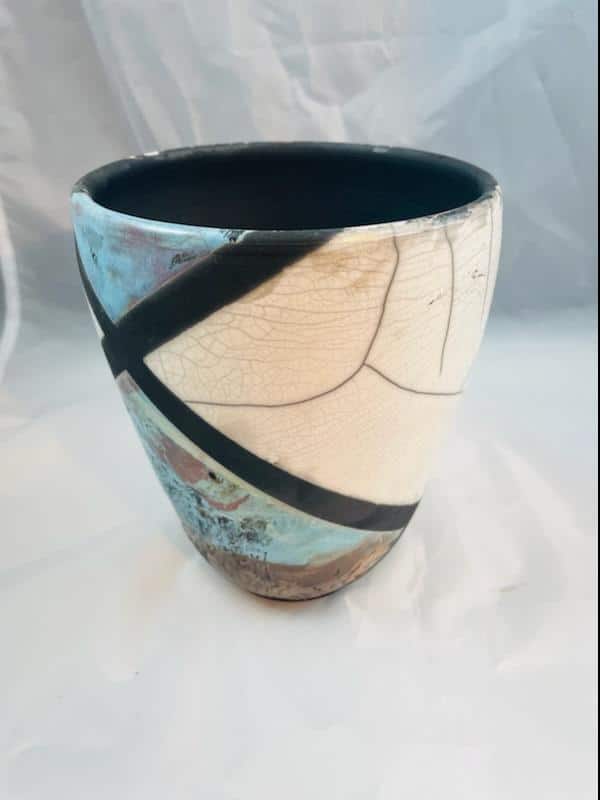
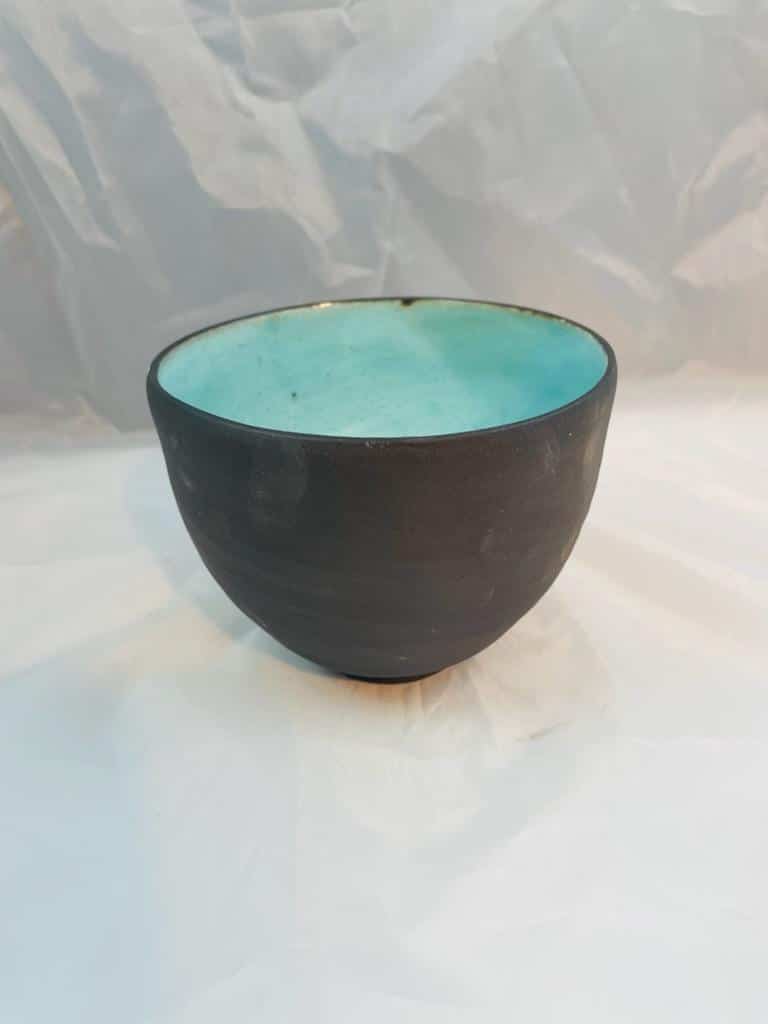
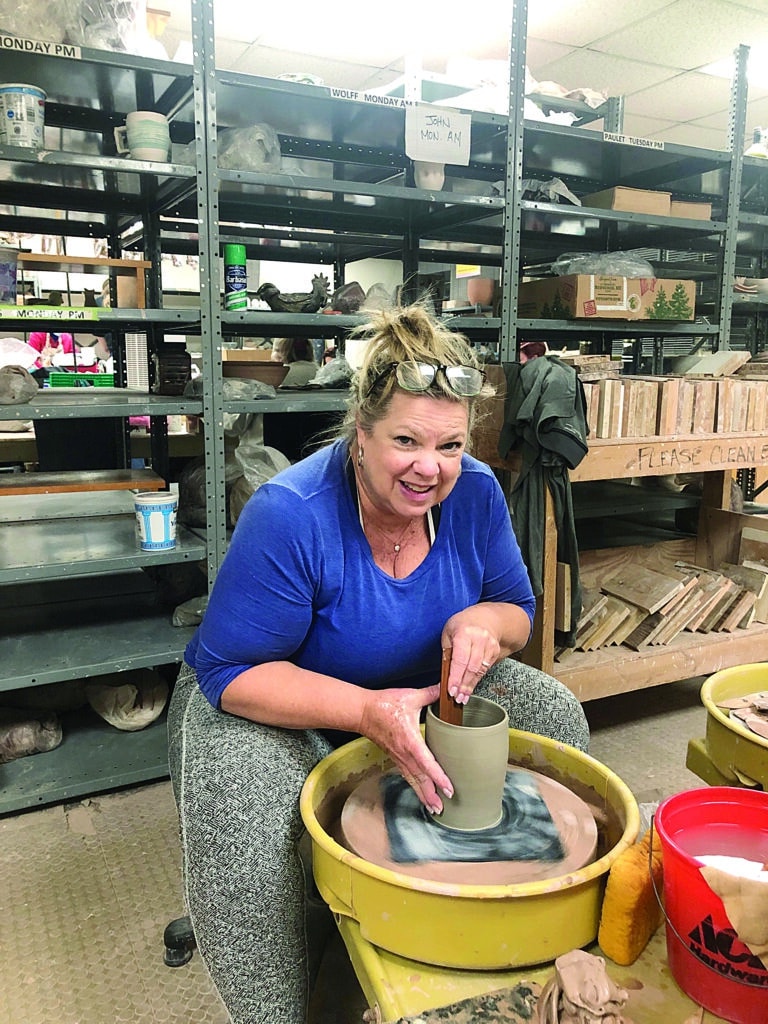
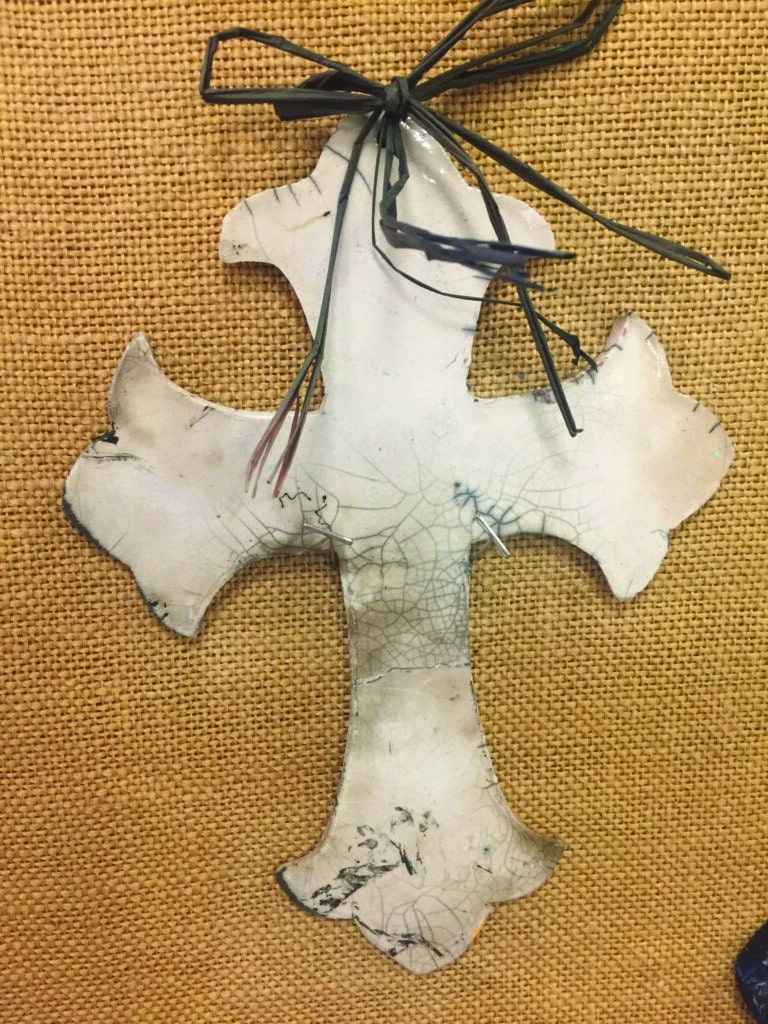
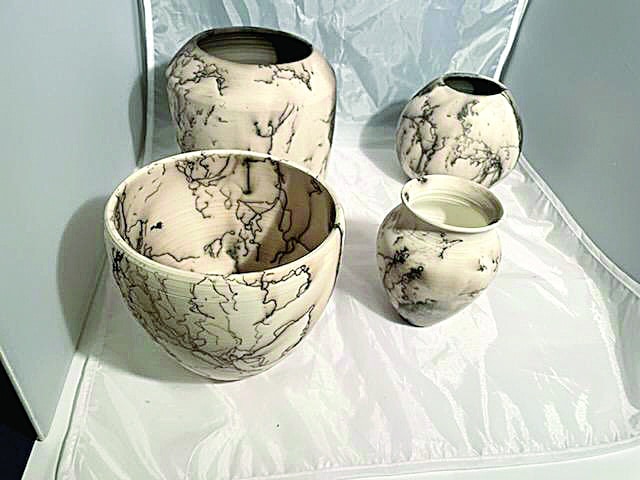
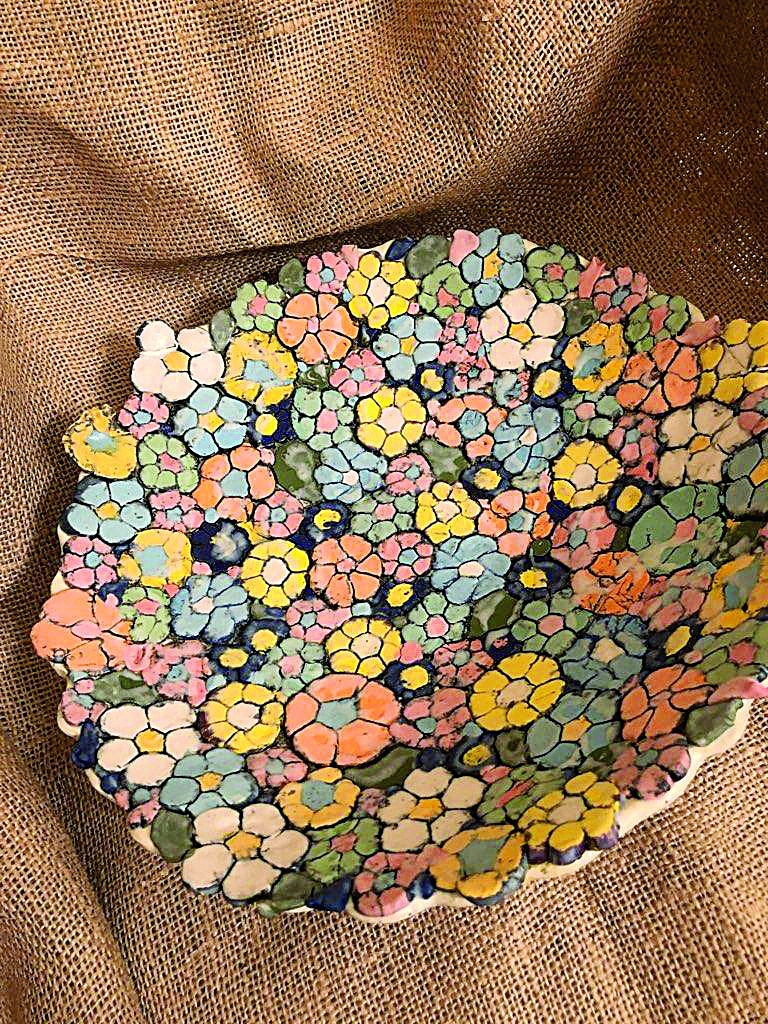
colored clay bodies.
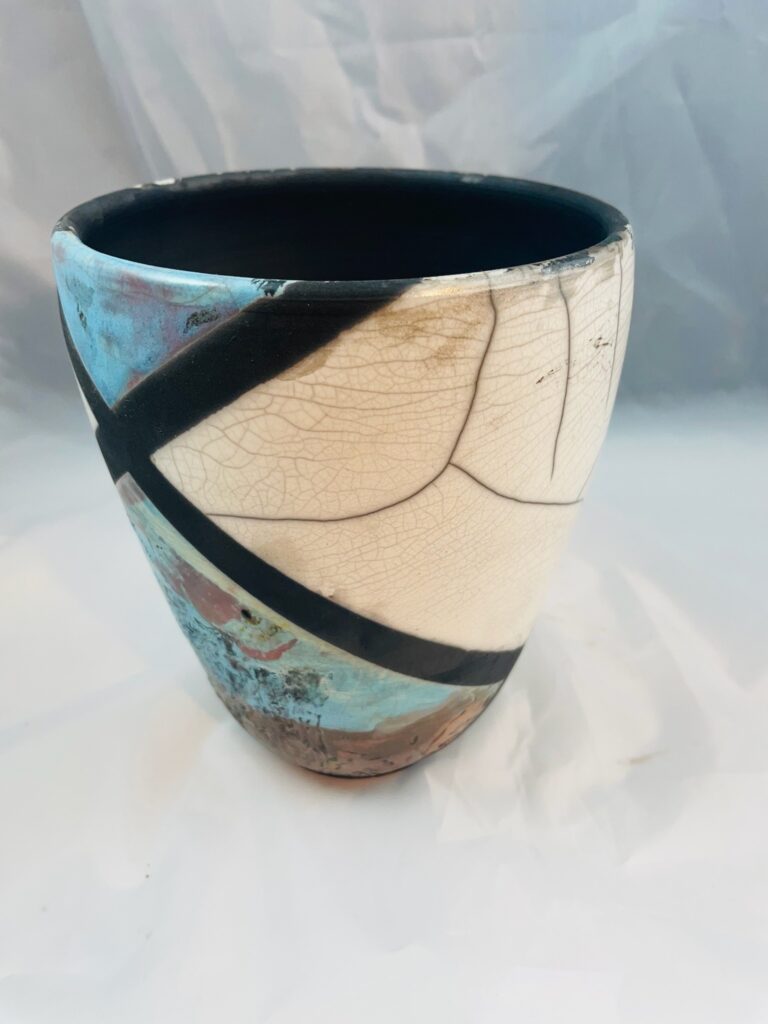
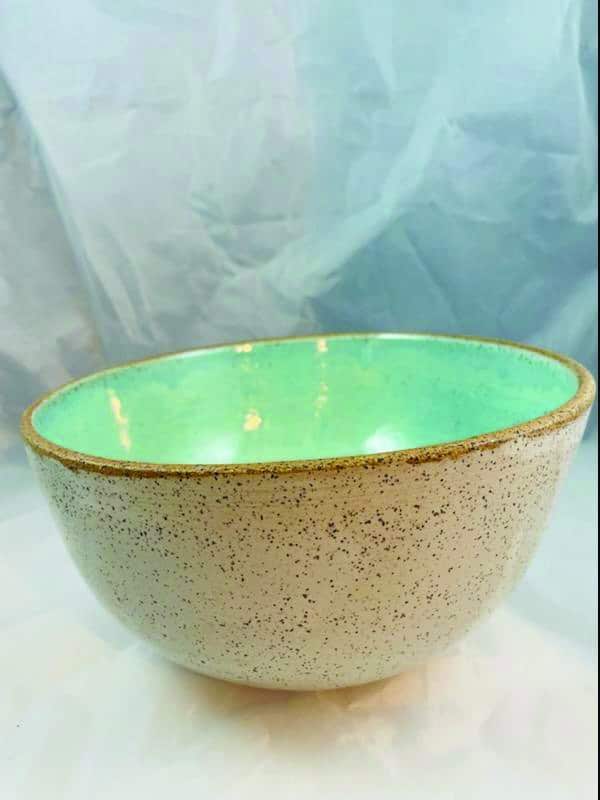
The science behind the art
Making pottery requires equal parts patience and skill. An understanding of the chemical processes taking place in the kiln is fundamental. Still, one never knows exactly what color patterns will emerge. A multitude of factors can impact the final look of a piece.
Glaze mixing recipes abound in the world of ceramics. The same glaze blend can produce a turquoise, red or golden hue depending on the weather, the speed at which the piece is transferred from the kiln to a container filled with combustible material and heat variations within.
“When it’s hot outside, it doesn’t cool off as quickly whereas in the winter, it cools off very quickly, giving it a shock,” Ables said. Dealing with glazes is very scientific. “You’re mixing chemical compounds and minerals — magnesium, iron oxide. [One must think:] What’s going to happen when they’re heated to 2000°F?”
A glaze can be pink in its liquid form as it’s being painted onto a bowl and come out of the kiln royal blue — that’s what happens when it gets fired. One can imagine the look of disbelief on students’ faces when Ables explains this dramatic change in color will occur because the glazes undergo a chemical process. “You have to trust me,” she tells them.
Playing with fire
Ables explores different techniques. Raku is a Japanese firing process consisting of removing pottery from the kiln when it’s red hot at 1800°F and placing it into containers with combustible materials. When the materials ignite, the containers are closed, producing an intense reduction atmosphere (the oxygen is removed) which impacts the colors and finishes in glazes and clay bodies. “That’s how you get the brown and blackness. It can also bring out color depending upon the glazes used,” Ables said.
Horsehair can be applied to the surface of pieces when they are removed from the kiln to create markings. “The carbon in the hair sizzles and makes black streaks. It’s a totally organic process. You never know exactly what you’re going to get,” Ables explained. The same can be done with feathers and sawdust.
The Obvara firing process, which originated in Eastern Europe during the Middle Ages, involves a bisqued pot being heated to 1650°F and removed from the heat. The pot is then dipped into a fermented yeast mixture before being dunked in water to rapidly cool the piece.
What’s your clay body type?
Ables generally uses standard white clay in the classroom because it’s not too messy, but there are many different options available to ceramicists. Speckled clay bodies have a natural textural component — they look like sand. Ables likes to create a water-colored interior and use a clear glaze on the outside of her vessels made with this clay, highlighting its earthy beauty.
“Spruill stocks eight different clay bodies. I’ve purchased some from Davens Ceramic Center in Chamblee. My favorites are the gray speck, the chocolate brown and raku clay which is less likely to shatter. Lizella red clay is mined in Georgia,” she said.
Creating custom colored clay is also an option, albeit very time-consuming. By kneading powders into white porcelain clay, Ables made 10 clay body colors.
Embrace the imperfections
Shocking clay bodies inevitably comes with a 10% fail rate, sure to disappoint artists who put so much time and love into their work. Still, Ables turns kiln accidents into a learning opportunity for youngsters.
“As in life, sometimes things happen,” she said. “We have to learn to fail and move on. We get the chance to make it again. The fear of failure and risk is crippling. I share with them times I’ve failed with breakage or cracks.”
“We’re not perfect and God created us just the way we are. If you want perfect, go get something that’s commercially created, where they have a form and crank out thousands of them. Make something that’s more personal, that has your fingerprints on it, your uniqueness. That’s what makes it art,” Ables smiled.
WAM
A longtime participating artist, Ables has seen the market grow into an incredible showcase for artistic endeavors. Having former students exhibit is especially rewarding.
“The opportunity to be back together this year is exciting. Being surrounded by so much creative beauty, it’s like a springtime party that gets you enthusiastic about life,” Ables exclaimed.
Watch our video podcast with Elizabeth Ables.
Instagram: @Ables.Elizabeth ■
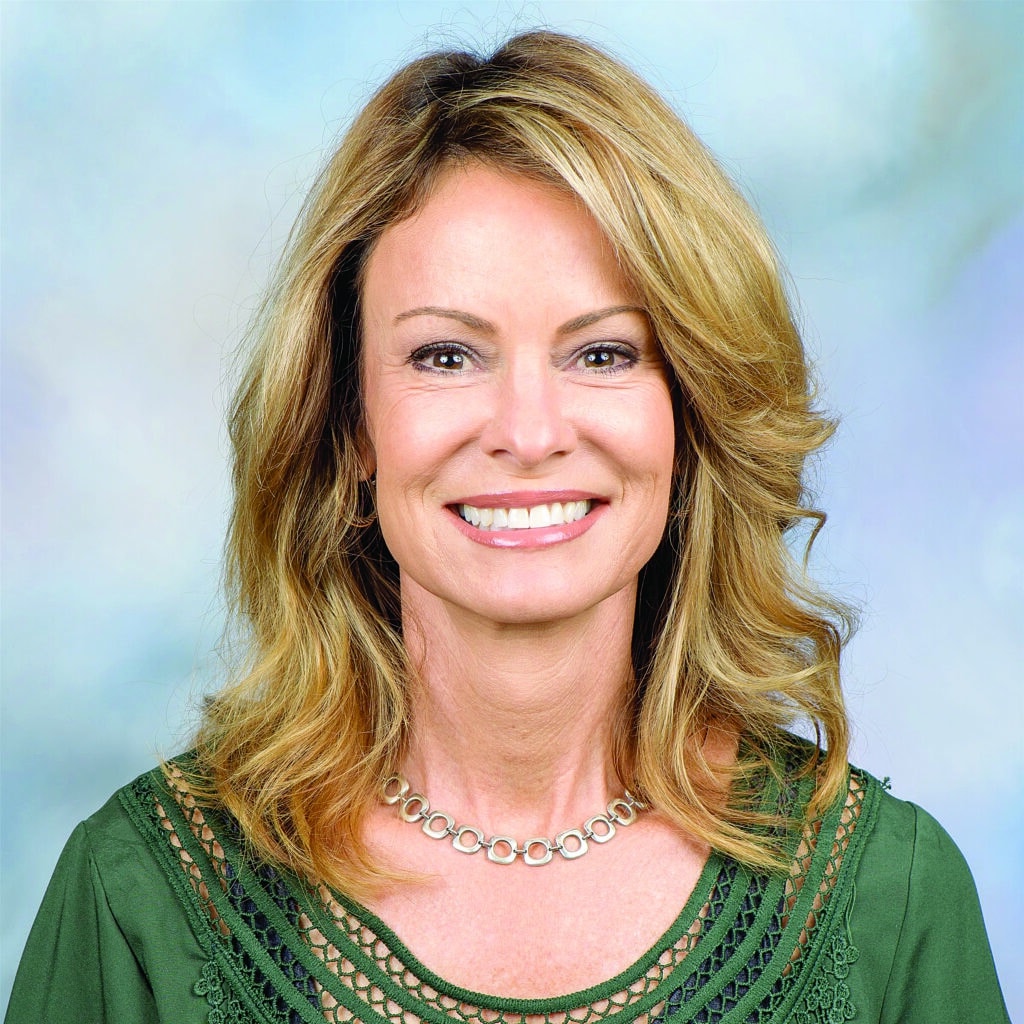
Kristie Onorato
A heart for art
Kristie Onorato has enjoyed painting for as long as she can remember, but she kept it on the backburner for several seasons of life. Originally from Cleveland, Atlanta has been her home for 20 years. Her move to Peachtree Corners four years ago came with the added perk of a four-minute commute to work.
Onorato has been teaching art since 1992. She’s been at Wesleyan for 11 years. Despite being a busy single mom to two teenage daughters, she’s been able to devote more meaningful time to her artwork over the last six years.
An undergraduate degree in Art Education from Ohio State emphasized Art History, Criticism and Aesthetics. To refine her artistic skills, Onorato took evening classes at the Cleveland Institute of Art and local studios. Visiting museums and ateliers in Europe provided further enrichment.
Onorato holds a master’s degree in Administration with a Visual Arts focus from Parsons School of Design in New York. Her formation and experience enhance her lessons. She gifted her paintings to friends and family for many years before she ever considered selling her work.
So many styles, so little time
As many artists do, Onorato has gone through phases over the years, working in pastels, watercolor, ink and oils. She works mostly with acrylics on canvas now because they dry faster and don’t emit fumes. Experiments with mixed media combine printmaking, her own torn-up artwork collages, glass, broken pottery, sand and different inks, “just to see what can happen.”
Onorato is keen to try new ideas and is continually developing. While some have fully formed a personal style, Onorato can’t imagine committing to any one approach. “I like to play and have fun,” she explained.
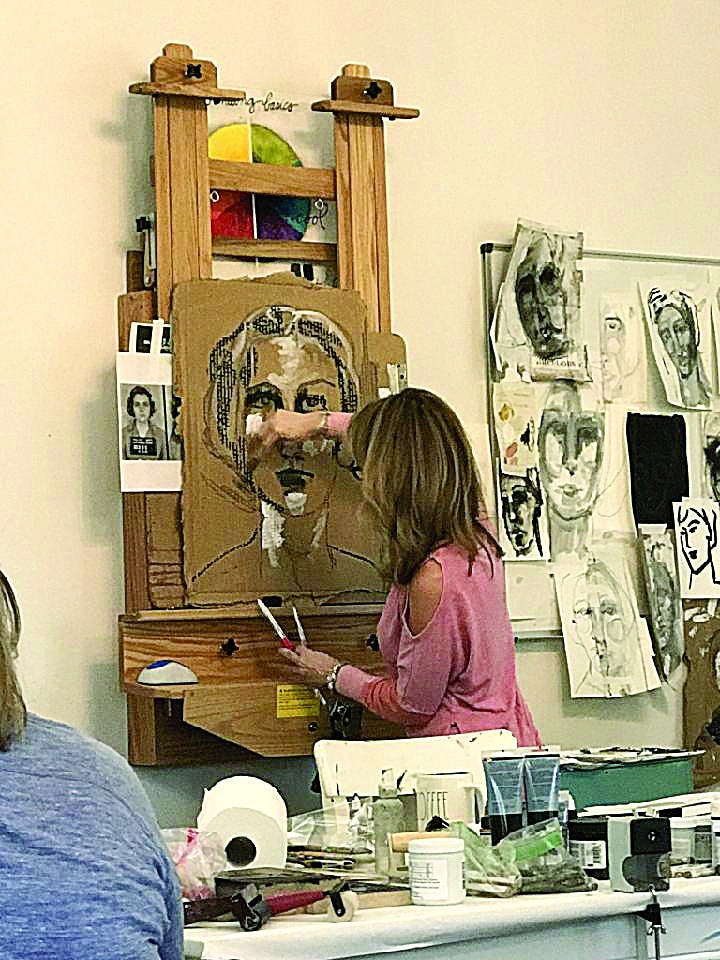
outside Charlotte
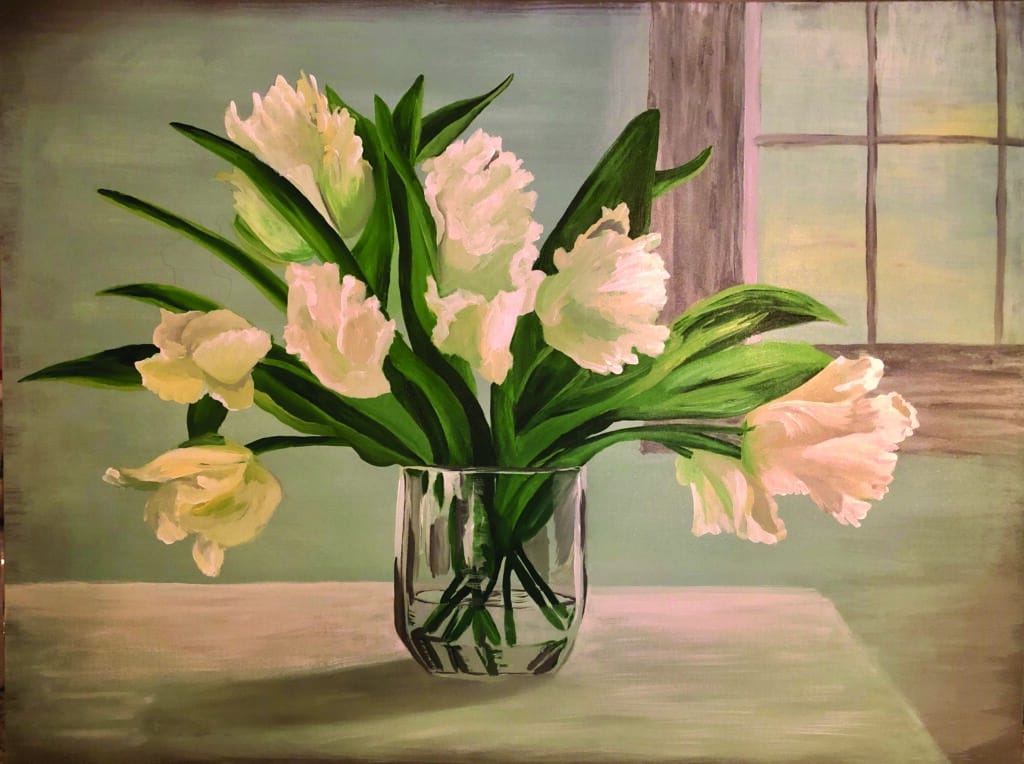
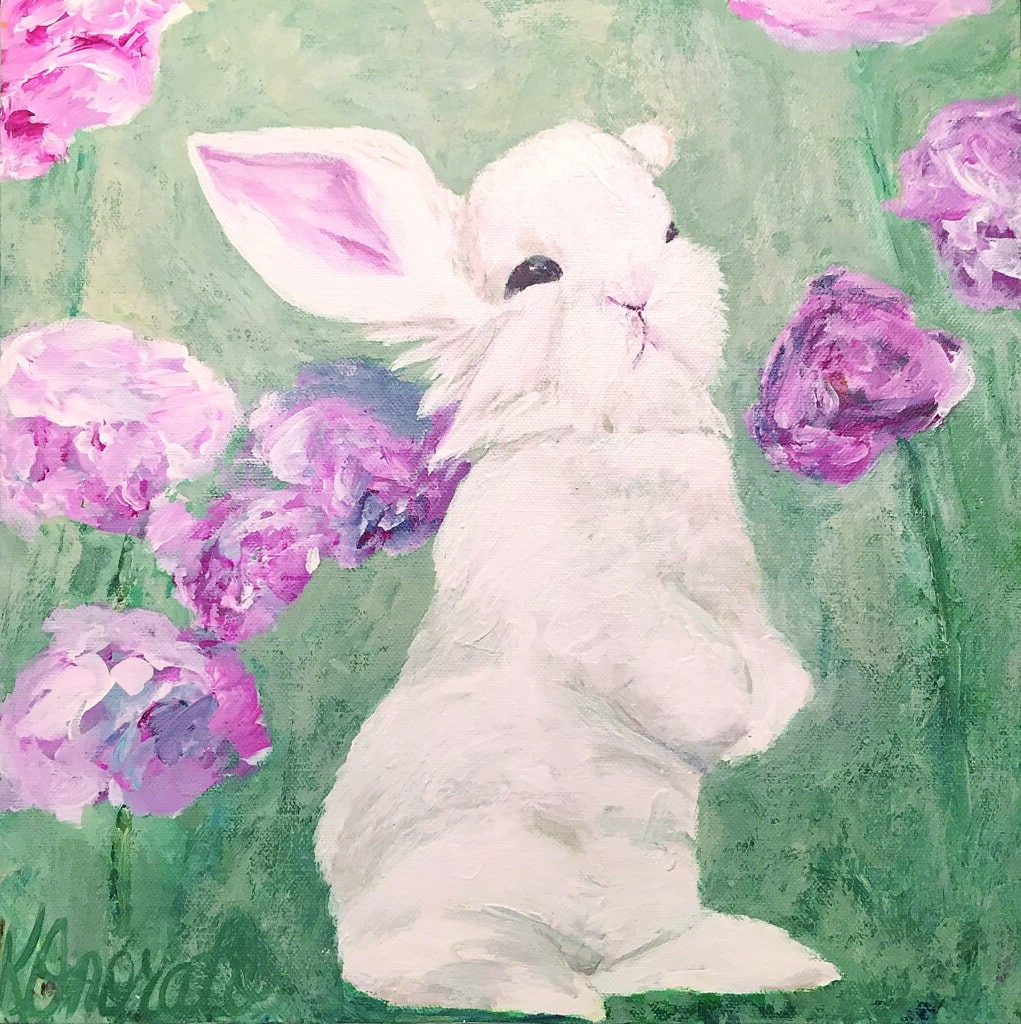
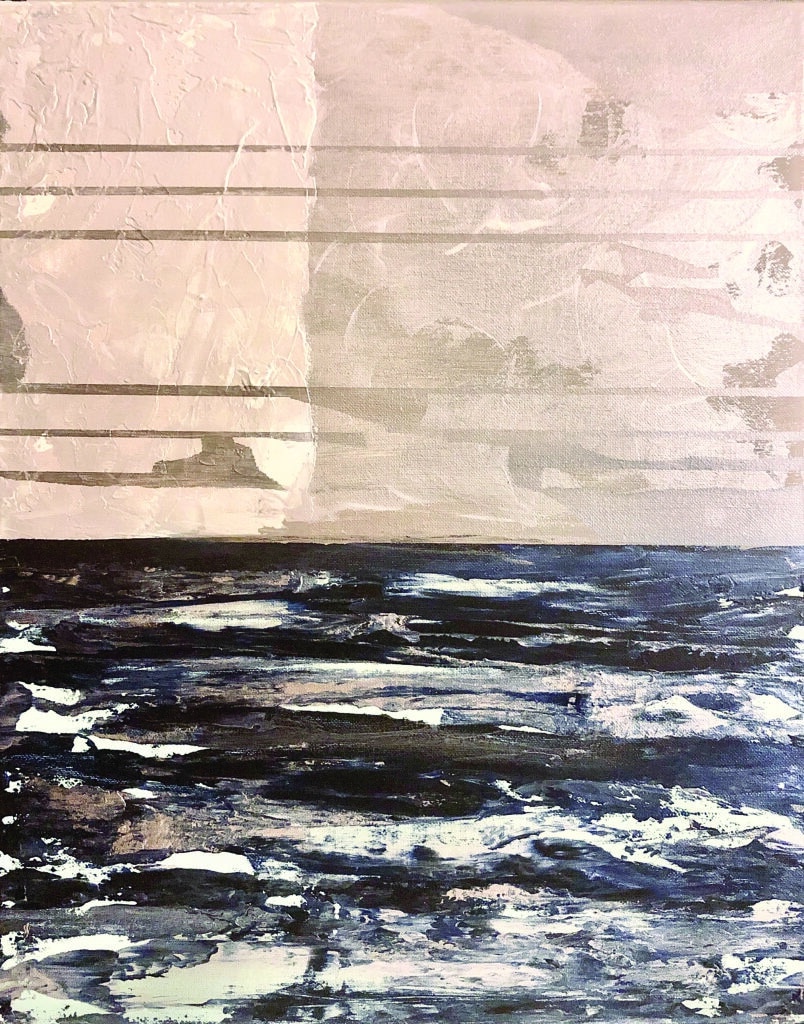
Series by Kristie Onorato will be available at The Wesleyan Artist Market.
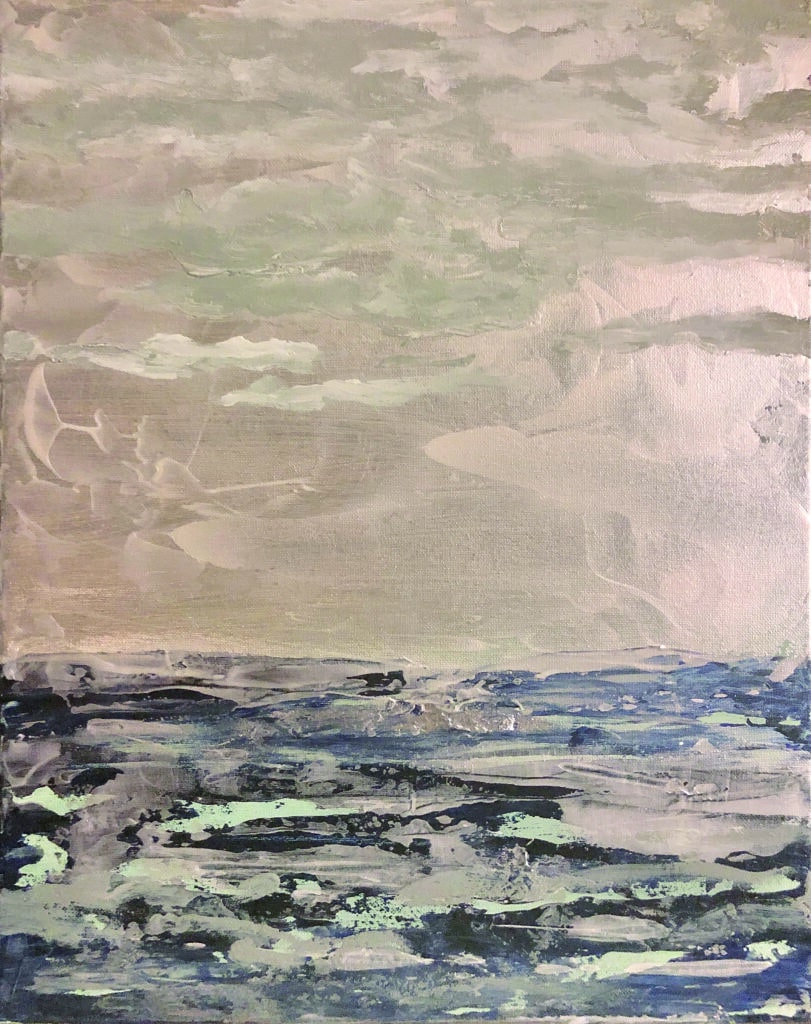
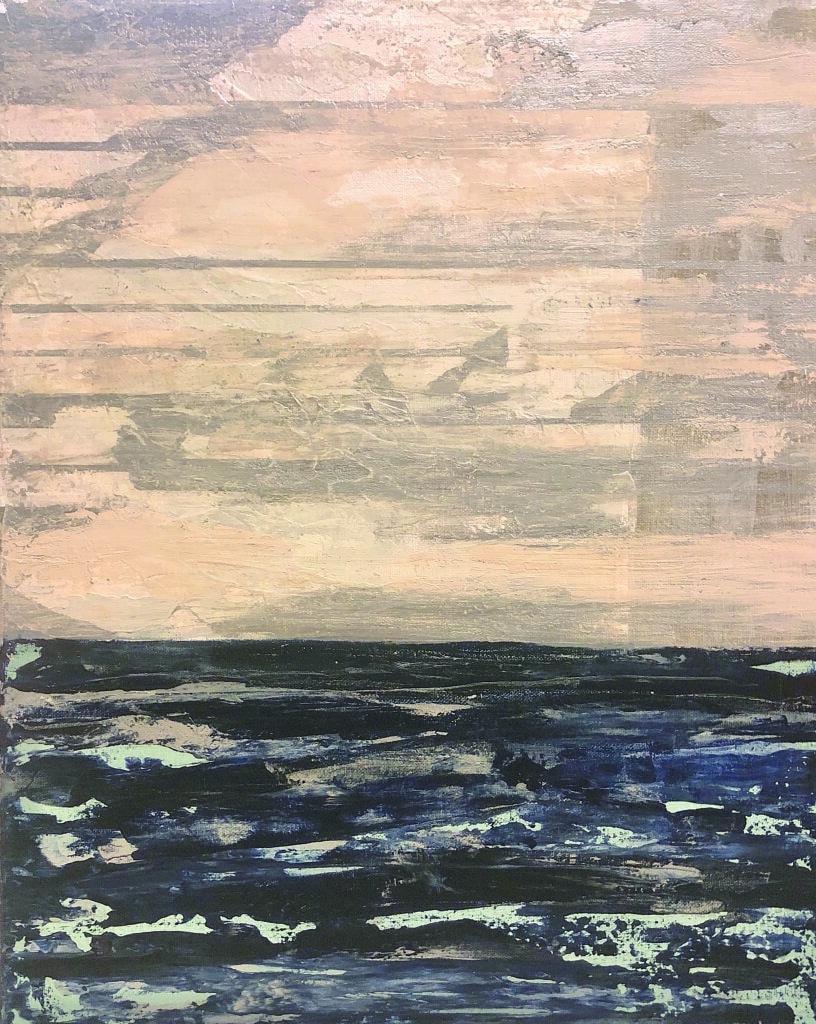
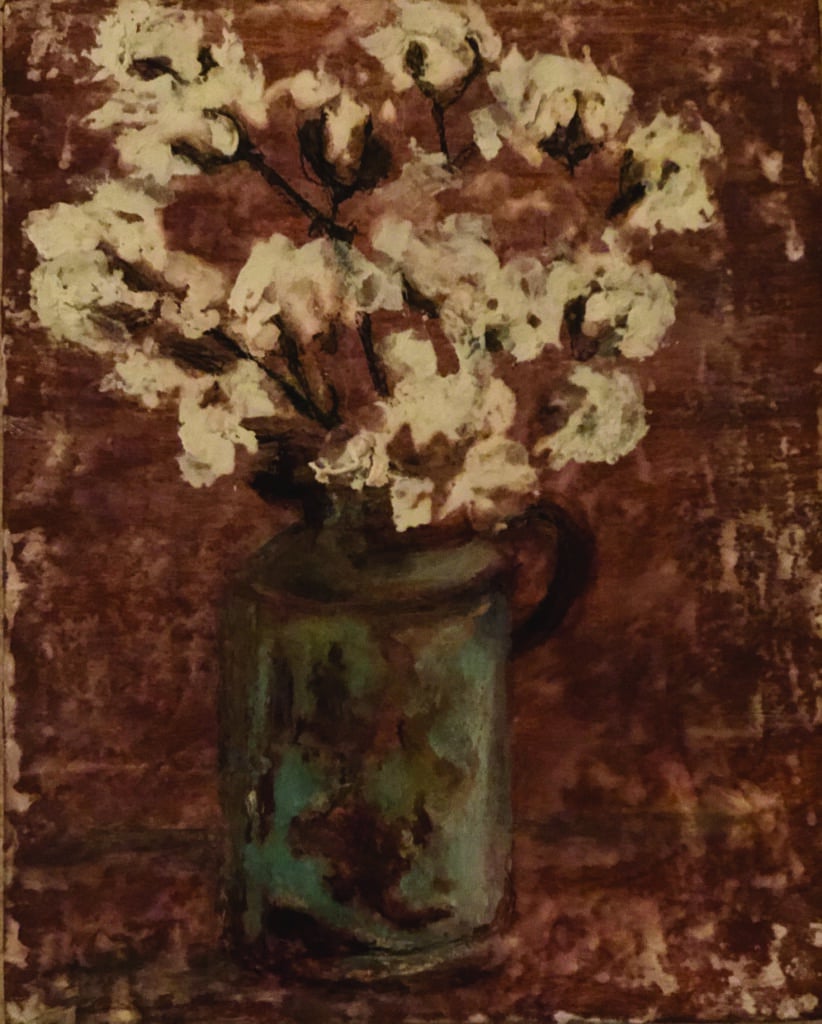
The sky is limitless
Inspired from above by both her faith and natural wonders like a breathtaking sky after a storm, she said that sunsets, flowers and people are among her favorite subjects. “How I paint them changes. My work continues to evolve. I won’t get stuck in my ways, but will gladly revisit and tweak old pieces endlessly.”
Impassioned by interior design, ideas that catch her eye in magazines, while visiting showhouses or browsing online are integrated in her works.
A self-professed lifelong learner and educator, Onorato is grounded in her spirituality. “My faith in God informs everything I do. Everyone is created in God’s image, so we’re all creators of some sort. Whether I’m creating images on a canvas, an environment in my home or classroom, or a meal for my family, being in touch with my creativity feeds my soul. Nurturing our creative gifts is a way to show gratitude for them,” she said.
Onorato produces groups of similar paintings, or series. Squirting paint directly on the canvas and using palette knives, she creates pieces that vary in size from small, to 16×20 inches, to 3-foot by 3-foot squares. “It’s fun doing big,” she said.
Floating frames are her preference for the smaller ones. Larger paintings are on deep canvases that don’t necessarily require framing.
Liquitex, Golden and Atelier Free Flow are some of her favorite paints. “I like to try different looks — it’s more about the effect you can get than the brand,” Onorato explained. She sources canvases conveniently from Dick Blick, though she had them shipped from wherever she could find them online during pandemic shutdowns.
Time flies in the art studio
A light-filled room with easy-to-clean floors on the main level of her home is where Onorato paints for hours as the rest of the world seemingly melts away. The home studio allows her to come and go freely. “I set aside days to paint. Once I’m on a roll, I don’t like to stop,” she said. “Everything else tends to fall apart because I’m so into it.”
Completed paintings are stored in her spacious classroom so they’re readily transferable to the WAM.
WAM
Onorato works on commissions and participates in Wesleyan’s annual Artist Market. “I enjoy meeting artists from all over,” she said. “It’s exciting to learn about their artwork and the different shows they attend. I get to see friends and former students. It’s like being part of a big celebration or hosting a party.” ■
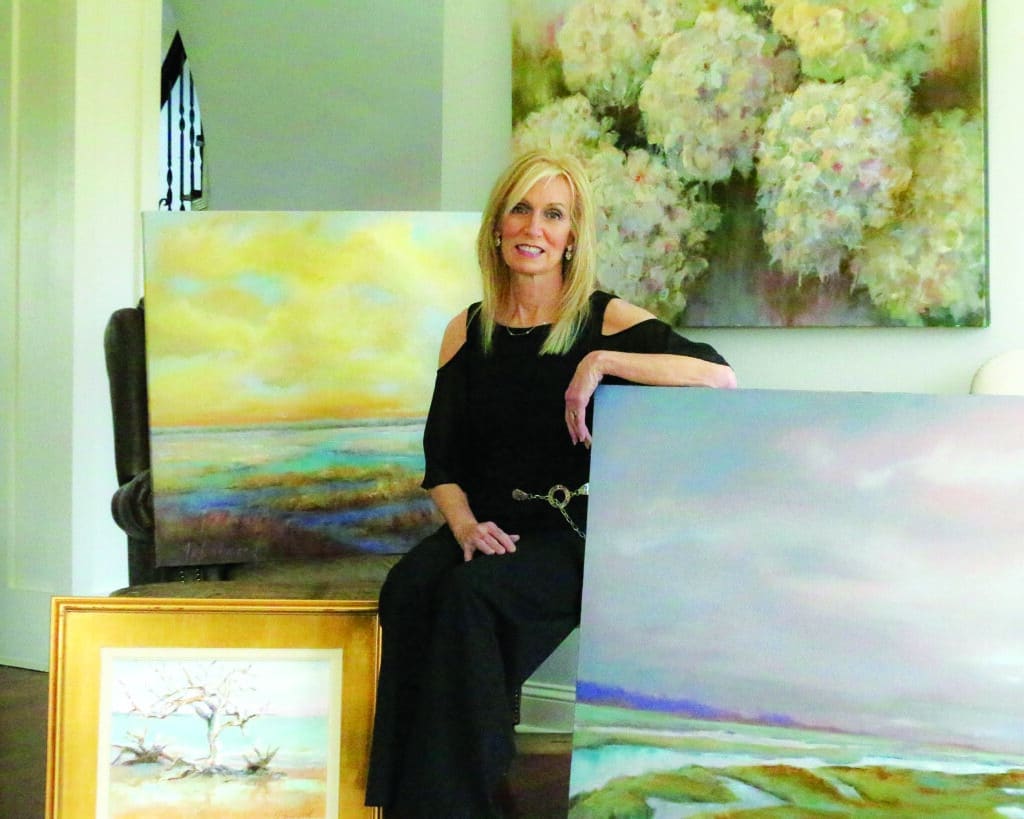
Jennifer Barnard
If you could say it in words, there’d be no reason to paint – Edward Hopper
Jennifer Barnard was born in Charleston, West Virginia, grew up in Decatur, Alabama and has lived in Georgia for 36 years. Her three sons attended Wesleyan. She has since moved from Peachtree Corners to a farm in Cherokee county.
Drawing is how Barnard has always processed the world. As a child, her profound silence worried her mother. “I was born an observer, always watching. I didn’t talk,” Barnard shared.
When she was 13, her grandfather passed away. “I didn’t have words to express my emotions, but I remember drawing his face. It made me feel close to him,” Barnard recounted.
Except for an art class in middle school, Barnard didn’t take lessons. Nor did art figure into her college prep track. Yet she gravitated towards sketching, advancing on her own. “If it’s there, it never goes away,” Barnard declared of her innate talent.
Her professional trajectory led to a master’s degree in Teaching the Hearing Impaired. After several years she also taught as a substitute at Wesleyan. When her boys were more independent, about 15 years ago, Barnard announced, “It’s my turn now,” to her spouse. She loved being a mother but was ready to nurture her talents.
As the boys got older, time increased. Now an empty nester, she can paint all day.
Today, her husband is her biggest fan. Barnard credits him with being supportive and occasionally allowing her to steal away with one of her paintings hanging in his office to sell it at an art show.
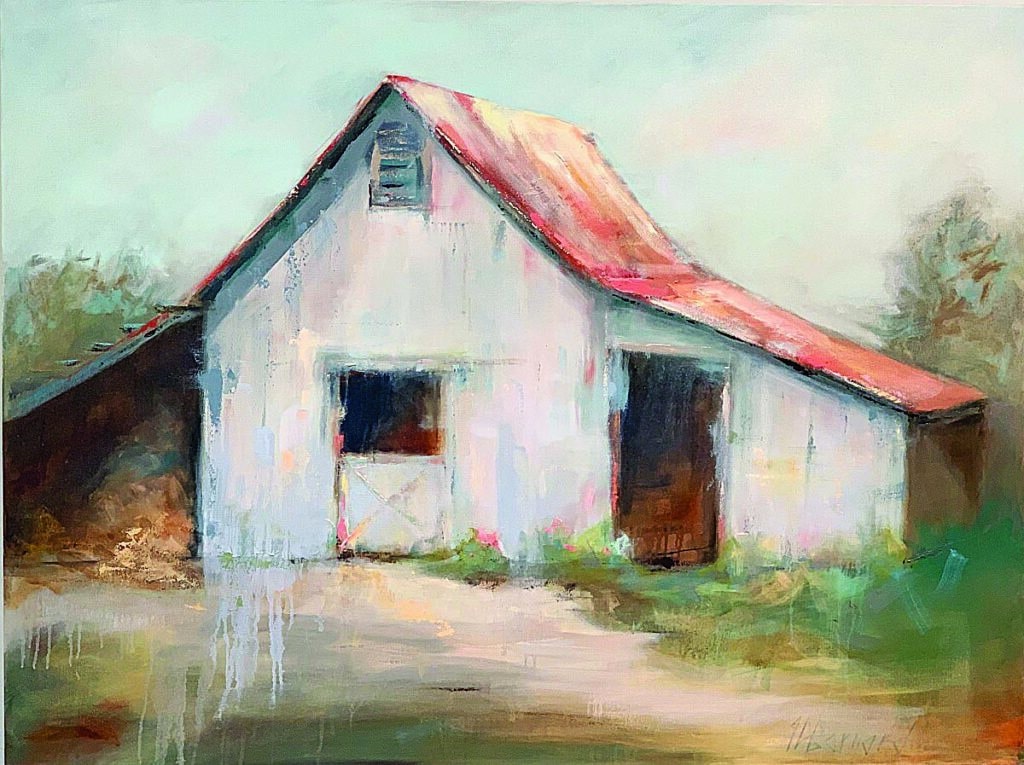
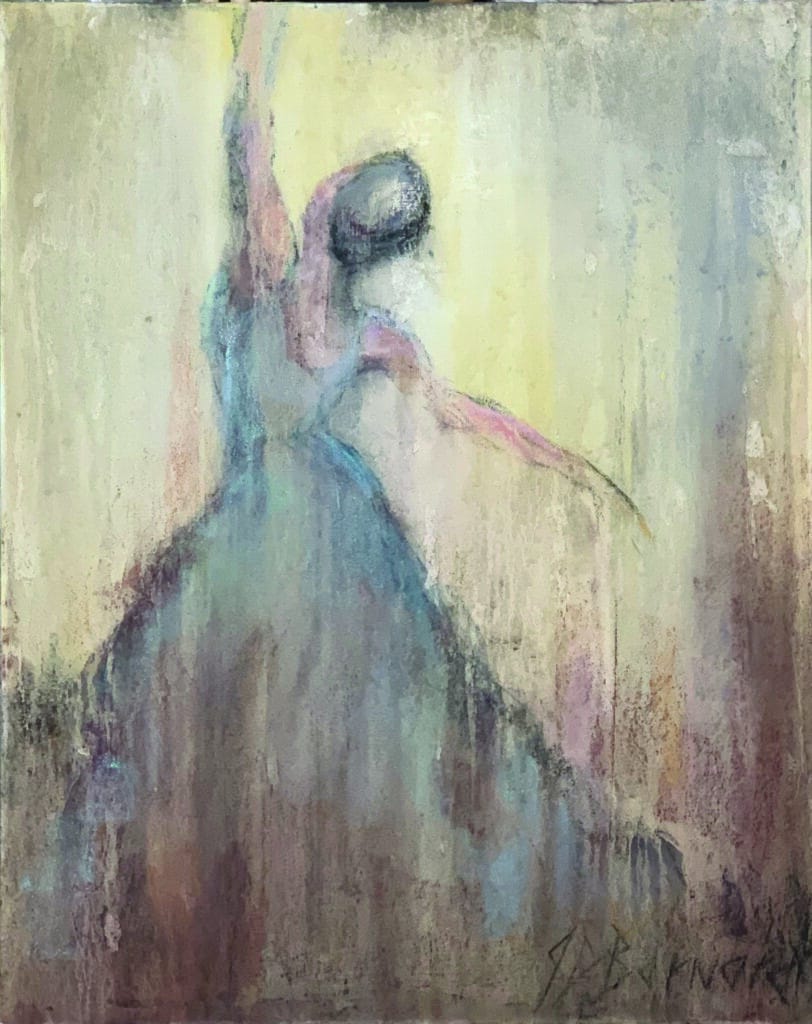
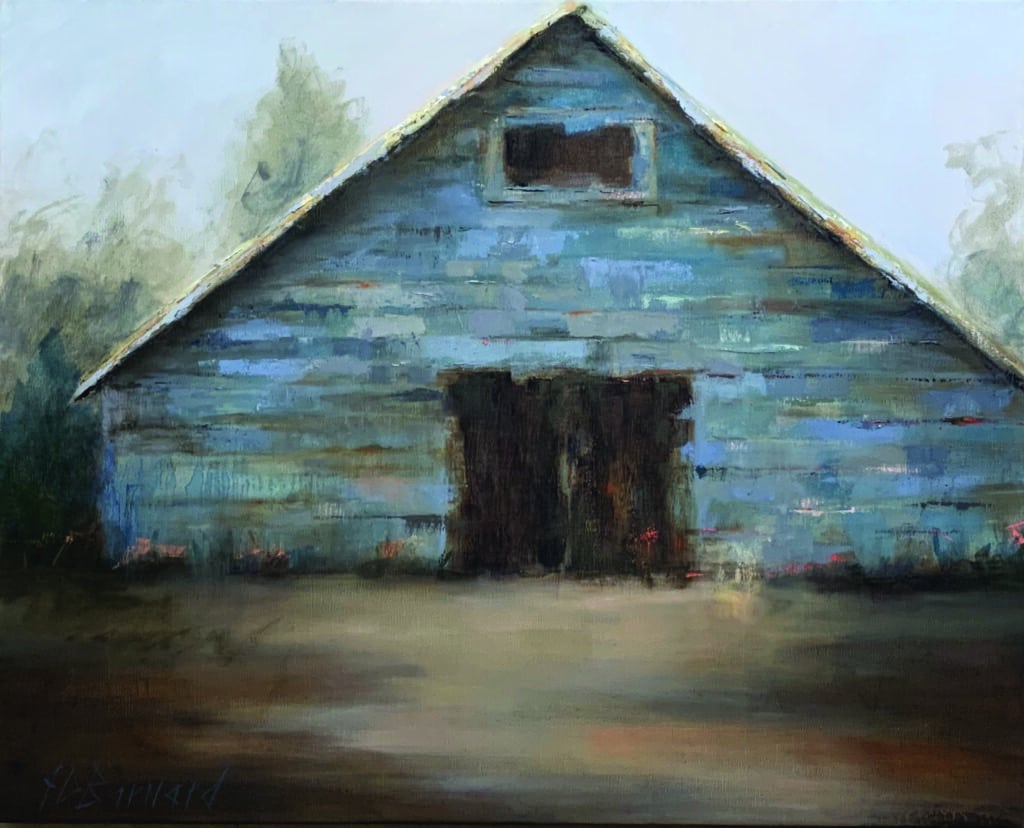
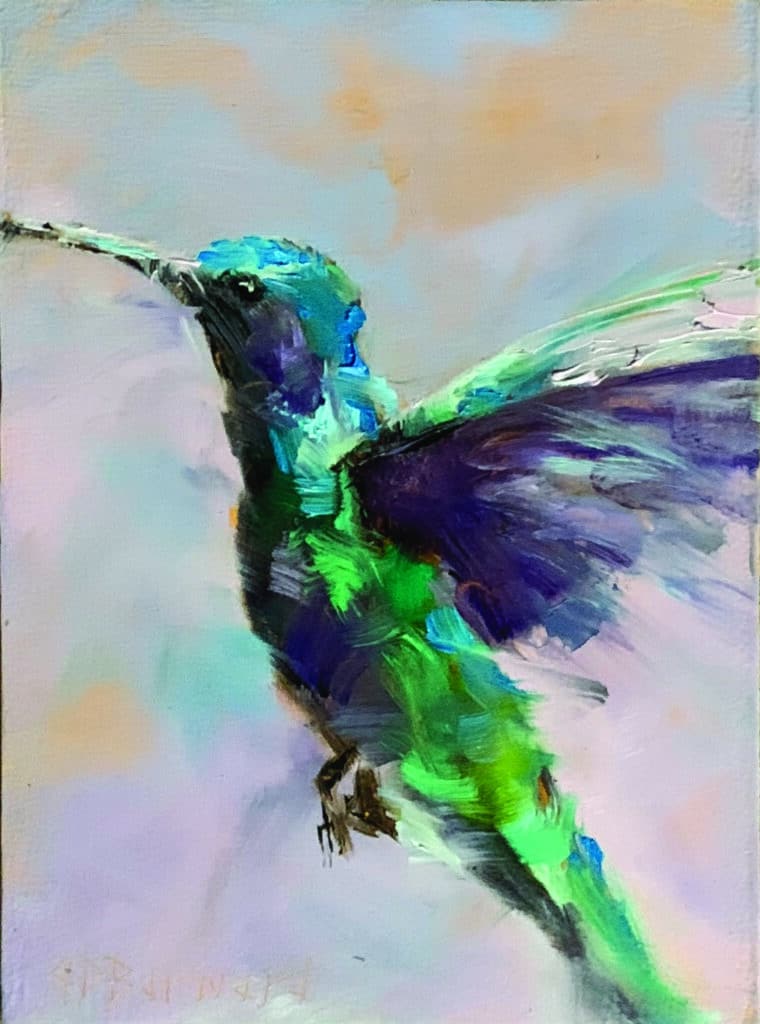
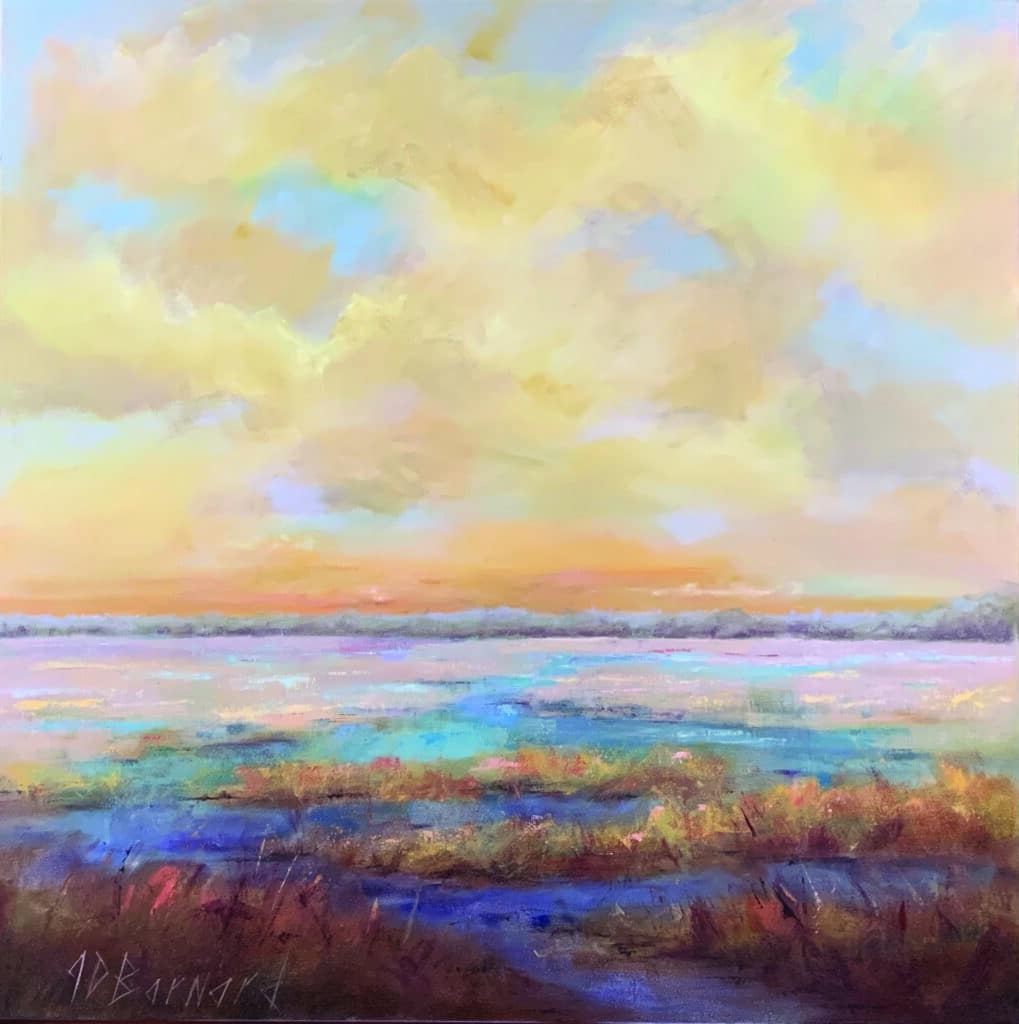
Every artist was first an amateur – Ralph Waldo Emerson
Carving out time to take classes in watercolor, pastels, colored pencils, color theory, portraiture, oils, and mixed media, as well as to paint, Barnard built her own curriculum. “I took 10 master level faux finishing classes which introduced me to materials like Venetian plaster, AquaStone and limewash,” Barnard said.
Barnard studied at Spruill Center of Arts in Dunwoody, Scottsdale Arts School in Arizona, Quinlan in Gainesville, The Booth Museum in Cartersville and sundry artists’ workshops.
“I seek those whose work I admire in magazines and, lately, on Instagram. Art is something you can never learn enough about. I’m continually growing and experimenting. I challenge myself to stay fresh,” Barnard said.
Artists and their materials are travel partners
According to Barnard, there’s an interplay between painter and materials. Sometimes the materials tell you what they want to be. Barnard uses archival quality products so her pieces will last. Oils are her first choice, but she switches between acrylics, mixed media, watercolors and pastels, pushing herself in different directions.
“Oils are buttery — fun to mix and layer. You can push and move them,” Barnard said. “Pastels are home — drawing was my first love. Mixed media is fun — I use unexpected elements like stucco finish, limewash, charcoals, layers of acrylic and move them around, spraying with water. A piece emerges from this flow of dance and discovery.”
The subject of her paintbrush is the deep truth that connects us
Drawn to beauty, Barnard finds companionship with God in nature. Her spirituality sprang from an inner quiet. Whether painting people, animals, flowers or landscapes, she listens to her subjects tapping into their unutterable essence. Barnard considers it her job to express this emotional connection as purely as possible.
A family history of breeding horses and her fondness for them make barns a special theme for her. She paints them with oils in a more traditional “modern impressionist” style. The subjects of her mixed media pieces, drippier and more abstract, tend to be figures — ballerinas, females, angels.
Barnard feels grateful to share her art. “What’s genuine in me connects to what is genuine in others. That deep truth is what makes community. It’s so important in this day and time to find what is genuine within ourselves,” Barnard said.
Plein-air painting renews my ‘art spirit’ – Bonnie Paruch
“I love painting en plein air. On location at Lake Lanier, in my backyard, on the coast, wherever. I’ll find places and either paint or do a study that later becomes a piece,” she said
“Paintings can be a combination of what I see in my mind and what’s in front of me. A quilt barn road goes through Pennsylvania, Virginia, North Carolina and Tennessee. A map shows all these barns with quilts painted on their sides. I started driving to those and photographing them on road trips,” Barnard continued. “Some, I’ll stay and paint on the spot.”
Art is born of the observation and investigation of nature – Cicero
Ever on the lookout to capture beauty, Barnard has been known to drive to a location, open the back of her car and start painting. The backwaters of her hometown brim with lily pads and attract migrating birds. She was lured there last year, stopping on a road in the middle of the water to render the scene
“Last month I went to Jekyll Island to paint with a friend for three days,” Barnard said.
During COVID, with shows canceled, Barnard took some online classes. She found color study helpful. “You take one color of paint, mix it with others, making a chart of each color,” she said. Barnard completed eight such pages with 30 color squares on each.
Now when in the field, she reaches for those charts to find the exact colors she’s studying and makes note of them. Back in the studio, she refers to her notes to paint with greater accuracy. “The colors in a photograph are never the same as what you see outside,” Barnard explained.
When you always make your meaning perfectly plain you end up boring people – Edgar Degas
The gap between what she sees and how the observer views her work is invaluable to Barnard. Rather than “explain” too much, she allows onlookers to finish it with their imaginations. “The artist’s unique insight gives art its vitality and an energy that unites people,” she remarked.
Multiple works in progress
A barn loft under construction will soon be the site of Barnard’s art studio. The space will allow gathering with other artists to paint and hold classes. Currently, she paints in a bonus room on the second floor of her home.
“I’ll have four paintings going at the same time on different easels around my studio. Oils take long to dry so I do those in the morning. Then I flip to progress some mixed media pieces because they dry faster,” she said. “I can go for four hours straight, moving from one painting to another.”
WAM
Barnard has showcased her work at the Wesleyan Artist Market since 2008. “It’s a great place to find art. When they first started, an art company would come in. Now it’s a regional show. People come from all over the Southeast,” she said. “I love being able to explain what my inspiration was and tell people where I painted each piece.”
She finds the kind people at Wesleyan and the yummy snacks are part of what make the show fun. ■
Related
Patrizia hails from Toronto, Canada where she earned an Honors B.A. in French and Italian studies at York University, and a B.Ed. at the University of Toronto. This trilingual former French teacher has called Georgia home since 1998. She and her family have enjoyed living, working and playing in Peachtree Corners since 2013.

Arts & Literature
Experience Shakespeare in the Park with Contemporary Classics’ Twelfth Night
Published
2 months agoon
April 11, 2025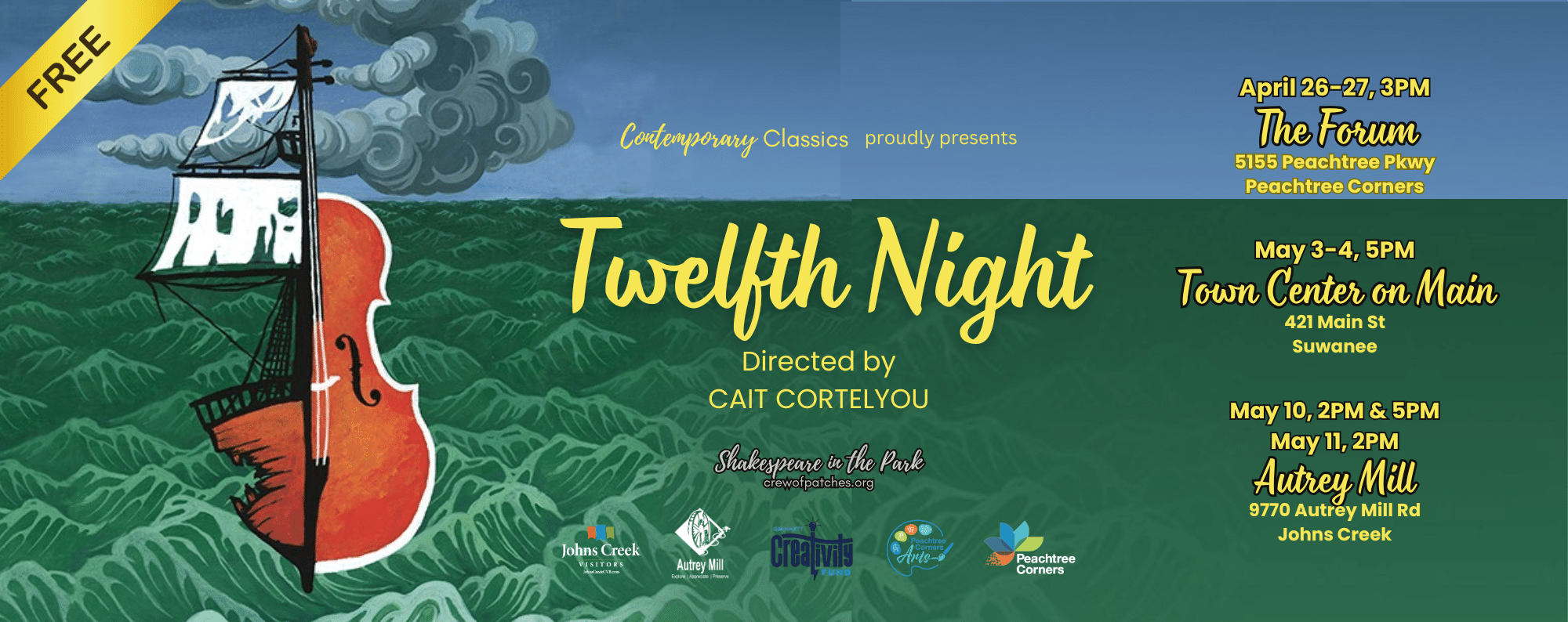
Contemporary Classics Theatre will present Twelfth Night, a free “Shakespeare in the Park” experience at three beautiful outdoor venues in north metro Atlanta
Twelfth Night, William Shakespeare’s romantic comedy of mistaken identity, will play at three beautiful outdoor venues in north metro Atlanta from April 26 to May 11.
Directed by Cait Cortelyou, known for her award-winning feature film “Ask for Jane,” Twelfth Night is a rollicking ensemble comedy explores unrequited love, misperceptions and the instability of gender.
Set in the coastal town of Illyria, young Viola survives a shipwreck and finds herself alone, believing that her twin brother died at sea. Disguising herself as a man, she finds work with the Duke Orsino, quickly falling in love with him. Orsino, however, is in love with the Countess Olivia… and Olivia quickly falls for Viola.
Meanwhile, Olivia’s steward Malvolia has bullied the household for the last time — and the staff is out for vengeance.
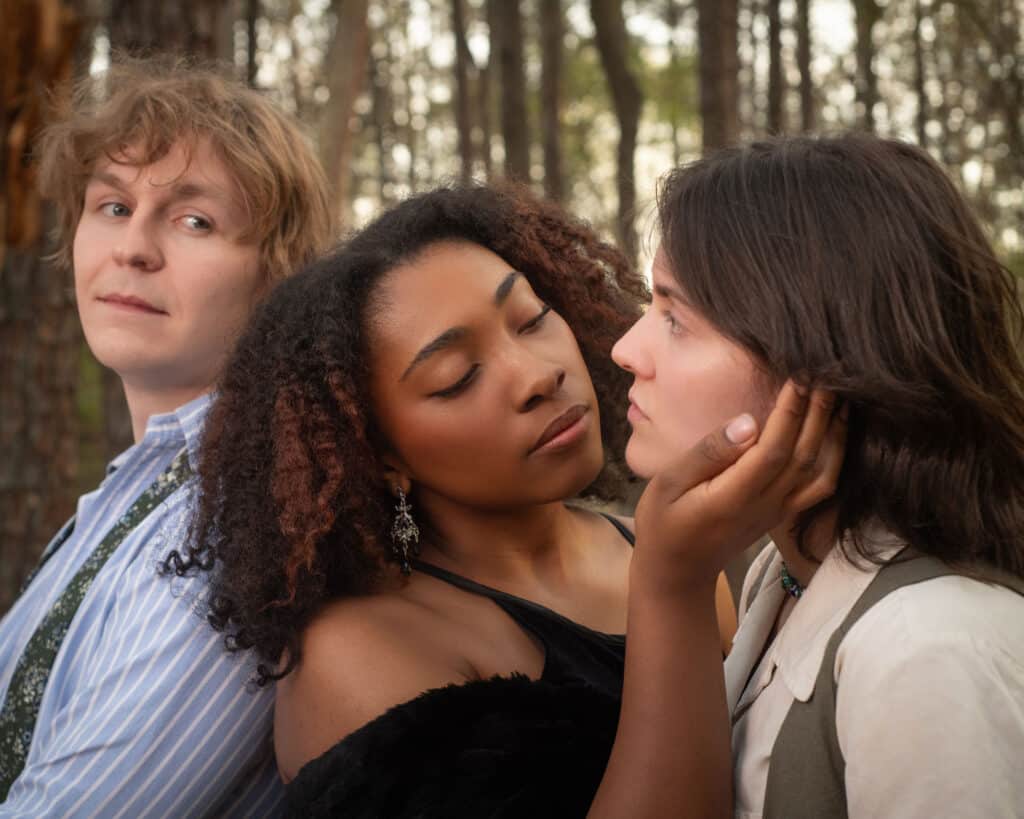
This timeless production of Twelfth Night features Allen Cox, Carl Fisk, Ryan Hutchins, Shem Louis, Susanna Lyne, Steven Medina, Matt Metzger, Danielle Montgomery, Macros Nora, TJ Sanson and Elliott Posadni as one of the first transgender actors to play Viola.
It also features costumes by artist Jordan Hermitt and production design by Sage Kim Gray.
Locations, dates and showtimes
The Plaza at The Forum Peachtree Corners • April 26–27 at 3 p.m.
Audience seating and a special musical performance will start at 2:30 p.m. Please note that seating is limited; arrive early and/or bring lawn chairs or blankets. Food and drink are available for purchase at the venue.
Town Center on Main, Suwanee • May 3– 4 at 5 p.m.
Audience seating and a special musical performance will start at 4:30 p.m. Please note that no seating is provided; bring lawn chairs and blankets. Coolers are welcome (no alcohol). Food trucks will be onsite at the venue.
Autrey Mill Nature Center, Johns Creek • May 10 at 2pm & 5 p.m.; May 11 at 2 p.m.
Audience seating and a special musical performance will start at 1:30 p.m. on both days and at 4:30 p.m. for the evening show on May 10. Limited bench seating only. In case of inclement weather, the show will move from the amphitheatre to the open-air Pole Barn nearby.
Admission to the shows is FREE. Register online for tickets.
About Contemporary Classics
Contemporary Classics exists to challenge and transform classic Western theater traditions by creating an inclusive community of diverse people, ideas and cultures. They believe that classic work is made even greater when performed by a larger variety of artists — especially those who have been marginalized by Wester theatre traditions — including women and people of color.
With no permanent home, the theatre company partners with places such as public parks for performance spaces. This “homeless” state is one of the reasons they call ourselves “a crew of patches”— they travel from “patch” to “patch” with their shows.
The name also comes from a line in A Midsummer Night’s Dream, and reflects the “motley” coat of a Shakespearean clown (or fool), created by sewing patches of old or discarded clothing together in a mishmash of textures and colors, like a patchwork quilt.
Fools, or “Patches,” transcend societal norms by being simultaneously a part of society and outside of it, giving them the ability to examine and comment on it.
For more information, visit crewofpatches.org.
Related
Arts & Literature
From Food Creations to Handmade Jewelry: Wesleyan Kids Prep for Artist Market 2025 [Podcast]
Published
2 months agoon
April 7, 2025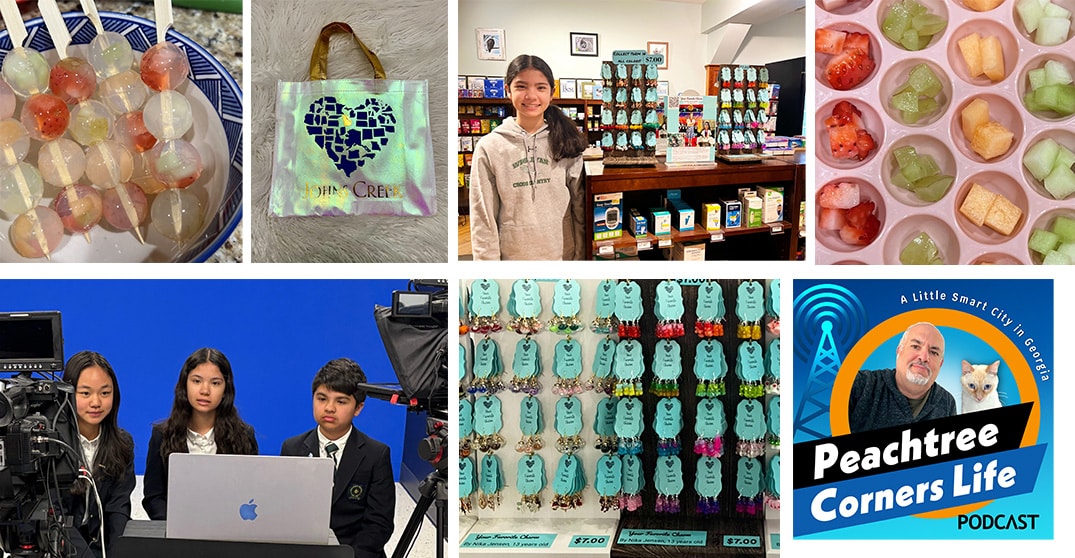
In this episode of Peachtree Corners Life, host Rico Figliolini spotlights three remarkable student artists featured in this year’s Wesleyan Artist Market. Eighth graders Kimberly Wang and Nika Jensen, along with sixth grader Carter Jensen, share their creative journeys—ranging from edible art like fruit jellies and peppermint bark to handmade jewelry and custom-designed bags.
Kimberly talks about her love for food art and balancing sweetness with fruity freshness, while Nika and Carter discuss building a jewelry business that also gives back—donating proceeds to families in the Philippines. This isn’t just an artist market; it’s a showcase of purpose-driven, globally inspired young talent. The event runs April 25–26 at Wesleyan School and is open to the public.
Podcast Takeaways:
- Kimberly Wang creates handmade edible treats, balancing flavor and freshness for the show.
- Nika and Carter Jensen co-run a jewelry and fashion accessory business, inspired by global travel and cultural experiences.
- Nika donates part of her proceeds to support families in the Philippines.
- All three students are deeply involved in extracurriculars—from musicals, marching band, math club, and academic bowl.
- The Wesleyan Artist Market features 24 student artists and over 70 professionals—open to the public April 25–26.









Timestamp:
00:02:19 – Student intros and extracurriculars
00:03:06 – First-time participants and motivations for joining
00:04:13 – Kimberly’s edible art and recipe testing process
00:05:16 – Nika and Carter’s jewelry and bag design business
00:07:06 – The reward of watching people enjoy your creations
00:08:20 – Donating art profits to support families in the Philippines
00:10:39 – Future aspirations in medicine and law, with art as a passion
00:12:06 – Behind-the-scenes logistics of preparing for the market
00:13:25 – Global travel inspiration: 73 countries and counting
00:17:19 – Where the students draw artistic inspiration
00:20:04 – Custom requests: From peppermint bark to Lego earrings
00:21:16 – Anticipation and excitement for this year’s market
00:22:29 – Reflections on Wesleyan and the artist experience
Transcript:
00:00:01 – Rico Figliolini
Hey, everyone. This is Rico Figliolini, host of Peachtree Corners Life. We have a great set of guests today. Because of the upcoming Wesleyan Artist Market, we thought we’d do some interviews with student artists. Three of the 24 that are going to be at Wesleyan Artist Market. So they’re with me here today. So we’re going to get right into that shortly. I just want to say thank you to our corporate sponsors. So I want to say thank you to EV Remodeling, Inc., based here in Peachtree Corners. The owner is Eli. Him and his family live here. They’re great. They do a lot of design work, design your space. Essentially, any home remodeling you need from whether it’s your kitchen, your bathroom, or a whole house remodel, or even an addition to your home, think about it, whatever you need, Eli can handle. So check them out. Go to evremodelinginc.com and find out how they can design your space and your life. Our next sponsor just came on, and they’re Vox Pop Uli. I want to thank them for joining us as well. They deal with all sorts of things you can imagine putting your logo on, similar to a little bit about what these kids do, right? They’re creating artwork. They’re creating a brand for themselves. And so this is what Vox Pop Uli does, right? They’ll take your brand and bring it to life. Essentially, anything that you can think of that would go on apparel, whether it’s sweaters or T-shirts or wherever you want to put your brand engraving, your logo, what object you want to put it on, even vehicle wraps. So if you’ve got a truck, you want to put a whole wrap around it, check them out because they can do that. They’re here in Peachtree Corners and they’re called Vox Pop Uli. So visit their website. I’ll have the links in the show notes as well. So thank you guys. I appreciate your support. So now let’s get right into it. Let me introduce our three artists, great Wesleyan students. Can’t wait to start talking to them. We have Kimberly Wang first on your left, on my left, and Nika and her brother Carter Jensen, who work together creating the artwork they do. So I’m going to ask you guys just to, you know, give me a little background. Tell me who you are, your grade, what you do, extracurricular, stuff like that. This way our audience can get to know a little bit more about you. So let’s start with Kimberly Wang. Hey, Kimberly.
00:02:19 – Kimberly Wang
My name is Kimberly Wang. I’m in eighth grade this year, and outside of Artist Market, I do marching band, and I also do the musical production this year, which is Matilda.
00:02:31 – Rico Figliolini
Excellent. What about Nika? How about you?
00:02:34 – Nika Jensen
I’m also in eighth grade. My name is Nika Jensen, and apart from doing the Artist Market, I do cross country. I’m also in Matilda this year, and I also do math counts, which is a math club.
00:02:47 – Rico Figliolini
Okay, cool. And Carter?
00:02:49 – Carter Jensen
Hello, my name is Carter Jensen. I’m in the sixth grade. And outside of the artist market, I do academic pool and I also do basketball.
00:03:00 – Rico Figliolini
Excellent. Alright, cool. So have you guys ever done the artist market before? Is this the first time?
00:03:06 – Kimberly Wang
This is my second year doing it this year.
00:03:08 – Rico Figliolini
Second?
00:03:10 – Nika Jensen
Yeah, this is our first year because we’re new students this year.
00:03:13 – Rico Figliolini
Alright, cool. What inspired you to get into it, Nika?
00:03:17 – Kimberly Wang
Well, I had my own business before we came to Wesleyan and so I thought that the artist market is a good way to like show my business to other people in our community. So yeah.
00:03:30 – Rico Figliolini
And you brought in your brother Carter to help you with?
00:03:35 – Nika Jensen
Yes, sir. He’s also part of the business.
00:03:39 – Rico Figliolini
Alright cool. Okay so, Kimberly. Food. Food is art, right? I’m sure your mom would probably say, it’s food, just eat it. But you’re playing with your food, essentially. What they used to tell you not to do, right? So when you create your food art, what do you think about? How do you go through this? How do you choose what you do and what do you exactly do?
00:04:13 – Kimberly Wang
So this year, I am making fruit jellies and peppermint bark. And when I think about what creations I want to make for the artist market, I go online and I look through like, what are some popular desserts that a lot of people like? And once I like choose my items, then I go through
the recipe and then I do a lot of trial and errors to make sure that like the products are like healthy and they taste well.
00:04:42 – Rico Figliolini
So they have to be edible, right? Because this is edible art?
00:04:45 – Kimberly Wang
Definitely, yes.
00:04:46 – Rico Figliolini
So are you eating a lot of the edible art before you get to what you need?
00:04:50 – Kimberly Wang
Not really. I don’t usually taste a lot of the food. I let my family taste it.
00:04:56 – Rico Figliolini
Ah, good. I like that. Yes. Get them to participate. Cool. So edible art, that’s one way of doing it. Jewelry, that’s something else, right? Wearable. How do you guys, Nika, Carter, how do you get to the place of what you do?
00:05:16 – Nika Jensen
So I started my business when I was 11 years old and it started like I got my first jewelry making kit and I kind of just expanded from there. So like I usually use Amazon to search and find like the prettiest designs like of earrings and pendants and get opinions from other people like my mom and my family to see like if they think it’s like wearable and if they like it. So I browse on Amazon for a while and I find like the best and high quality products and then I hand make them at home usually like every day after I come home from school so and my brother he does something else and he can tell you about that.
00:06:01 – Carter Jensen
I, my sister, she got a Cricut machine for, like, her 12th birthday, I think. And started making these, like, iron-on bags with the Cricut machine and, like, making them based on, like, Georgia and, like, Wesleyan and designing it based on fashion.
00:06:19 – Rico Figliolini
Alright. Cool. So let’s get back to Kimberly. The food that you do. Do you have particular flavors you like? Do you have particular areas that you stay in?
00:06:33 – Kimberly Wang
So this year I’m trying out like something more sweet with chocolate. But last year I definitely went for more of like the fruity side. And I think I like to keep it like a balance. So that way one is not overpowering the other. My personal favorite will probably be fruit because it’s healthy. And I mean, it just tastes good in general.
00:06:56 – Rico Figliolini
Okay. Alright cool. What’s the most rewarding part that you can think of, of making edible art?
00:07:06 – Kimberly Wang
Well, I mean definitely like you said before you get to eat a lot of food. I mean, I did say before that I don’t eat a lot of the creations I make, but sometimes I still do eat it. And so I think it’s also really rewarding to see like people try out your creations and see like their reactions to what they think of it.
00:07:27 – Rico Figliolini
So when, I know I’ve spoken to other artists when they sell their artwork like paintings or stuff like that they get a chance to see it sometimes when the fan that bought it if you will, would send them a picture of where they hung it right? Yours disappears right?
00:07:45 – Kimberly Wang
Yeah, exactly.
00:07:47 – Rico Figliolini
Yeah I guess, there’s no way to, short of doing a selfie with it or taking pictures of it, there’s no there’s no permanency to it so how does that feel?
00:07:57 – Kimberly Wang
I mean well as long as the people enjoy it that’s good. And I mean I think mainly it’s about like the memory that you have of having the food and if you like it then it stays as a good memory for you and if you don’t then I mean you can always try out different things.
00:08:20 – Rico Figliolini
Okay. Nika, Carter, as far as the jewelry goes the, you’ve used it to raise money to support children in the philippines? yes
00:08:29 – Nika Jensen
Yes sir.
00:08:31 – Rico Figliolini
Is that, is that how you started this when you were 11? Is that the reason?
00:08:35 – Kimberly Wang
No, so I was like 11 during the pandemic. So I was always looking for a way to express my creativity. And so that’s how I started my own business. And so I was selling at my uncle’s pharmacy and I was saving up the money to use for like college or for like other events later on in my life. But this last year and a half before this school year, we were living in the Philippines. And so I was really touched by all of the families there. And we even did something similar where we gave out food and canned goods over Christmas to poor families there. So that just
really touched me. And so ever since we got back to America, I’ve been donating part of my profits to other families in the Philippines.
00:09:24 – Rico Figliolini
Carter, did you end up going on that trip as well?
00:09:28 – Carter Jensen
Yeah, I was with her. We stayed there for about a year and a half. We also did schooling there.
00:09:36 – Rico Figliolini
It’s interesting brothers and sisters, I have three kids and you know growing up brothers and sisters always there could be dynamics there. So how do you get along? Do you ever say to your sister, I don’t know about that. You know that might not look as good, that might not sell. Do you give good feedback? I mean how do you praise her or how do you work together?
00:09:58 – Carter Jensen
She’s more of the leader of the business so like I usually just like try to like agree with her and like yeah.
00:10:12 – Rico Figliolini
Alright that’s cool well you need a leader of the pack sometimes right? So Nika the artwork that you do, you know this is part of what you do you’ve mentioned other things you do right? I know you’re young, you all are, you know you’re not old enough to really think well maybe you are to really think what you want to do with your life right? Is art something that you want to keep as part of what you’re doing in your life?
00:10:39 – Nika Jensen
It’s definitely something that’s of great value to me, but I kind of want to pursue the medical field, but art is also really important to me.
00:10:49 – Rico Figliolini
Okay. Sounds good. Same question to Kimberly. What about you? How do you feel about the work you do?
00:10:57 – Kimberly Wang
I definitely enjoy making food, but like Nika said, I was also really interested in the medical field. And so like I’m not really sure if I’m going to continue pursuing this. But I mean it’s definitely brought me a lot of joy while doing food art.
00:11:15 – Rico Figliolini
Okay. Medical field both of you, that’s cool. What about Carter? How about you? 00:11:19 – Carter Jensen
I kind of like, I like doing art it’s one way to like express your creativity as my sister said. But I also kind of, I’m not really sure what I want to do when I grow up, maybe be a lawyer.
00:11:33 – Rico Figliolini
Okay. Well, artwork gives you a chance, right, to play a little bit, to be able to also see how people, like Kimberly, like you said about how when people see your food or taste your food and your food art, if you will, and it gives you a chance to see how people appreciate what you’re doing, I think, right? The challenges of making food art and keeping it fresh and making sure you’re going to deliver it on the right way I guess at the Wesleyan artist market, how do you how do you handle that part of it?
00:12:06 – Kimberly Wang
So for me the night before each day of the selling I would stay up really late and I make all my products so they’re all fresh and they’re all new. Because I want the best for the people that are eating the food because I don’t want anything to go bad overnight and so I make sure that it’s always new products and I make it, yeah.
00:12:32 – Rico Figliolini
We don’t have the same issue with the jewelry that you do, Nika. So that could last forever, right? But putting it together, sourcing the supplies, right, of what you do, the logistics of it, I guess. How do you handle that? Like getting all the materials together? Do you order it all on Amazon?
00:12:52 – Nika Jensen
Yeah, I order like 99% of all of my things from Amazon. And then since I already have the materials shipped to me, then all I have to do is just create them from my house. So it’s easier for me than having to go out and buy supplies at stores.
00:13:11 – Rico Figliolini
Sounds good. What inspires you as far as jewelry goes? I know that you said you look online to see other things and what the trend is. So where do you find most of your trends? Is it just on Amazon or is it social media, other places?
00:13:25 – Nika Jensen
I kind of observe other people and like what they wear and also social media. And I get a lot of inspiration also from like nature and from like my travels. We’ve been to a lot of countries in the past five years, 173 countries.
00:13:44 – Rico Figliolini
How many?
00:13:45 – Nika Jensen
I’m sorry, not 173, 73 countries.
00:13:49 – Rico Figliolini
73 countries?
00:13:50 – Nika Jensen
Yes, sir.
00:13:51 – Rico Figliolini
That you’ve been to in how many years? I can’t even wrap my head around that. How did you even do that? Teleport? I mean, how did you do that? Wow. What is your heritage, if you don’t mind me asking?
00:14:12 – Nika Jensen
I’m half Filipino. My brother and I are half Filipino. And then my father is part Danish and then also American.
00:14:21 – Rico Figliolini
Do you speak any languages?
00:14:23 – Nika Jensen
I speak the language of the Philippines called Tagalog and then English. And I’m learning Spanish.
00:14:30 – Rico Figliolini
Really? Okay. Kimberly, how about you?
00:14:33 – Kimberly Wang
So my mom is Taiwanese and my dad is Chinese. So I speak Chinese, English. I’m learning French and I’m learning Korean.
00:14:43 – Rico Figliolini
Really? Wow. Okay. Speak Mandarin, is it? Okay. My son was learning that for a year and he was, it’s a tough language to learn. But I’m sure being able to travel for example Nika, to be able to see other other countries and inspiration from those countries. What of the 73, 75 countries you visited what would you say the top five would be for that type of inspiration? Can you pick that up?
00:15:16 – Nika Jensen
I think so. I really like Argentina just because it’s so unique and the culture is just so strong there. Like you really feel so immersed just when you like step into the country. I like Italy, not only because of the food, but that’s also where I got a lot of inspiration for my jewelry. Just like the glass in Venice, like the Murano glass, like that’s also a really big inspiration. In Turkey, that’s when I first like found my interest in jewelry because there was, we went to this bead store and there was like thousands of different beads and I got to like choose different charms and like experiment with creating jewelry. So Turkey, Argentina, Italy, and then I have to give it to the
Philippines, obviously, because we lived there for so long. And then that’s hard. What do you think, Carter?
00:16:12 – Carter Jensen
I like India because I really like butter chicken. Also like Italy because I like pizza and pasta.
00:16:27 – Rico Figliolini
Yes, can’t get any better pizza than Italy, that’s for sure.
00:16:30 – Carter Jensen
Yeah, it’s really good there. And I also like Japan because it’s very futuristic and it’s like…
00:16:38 – Rico Figliolini
Is it?
00:16:39 – Carter Jensen
Yeah, it’s like a new environment and it’s like…
00:16:45 – Rico Figliolini
Yeah, cool. I can’t wait I think where, I think we may be heading there in July so that would be fun. I’ve never been so that would be interesting. Cool so with the artwork, with the inspiration, with the journey that you guys have been on, do you think that, are there any artists it’s hard and food maybe unless it’s Gordon Ramsay or something, but do you draw any inspiration? Who do you draw inspiration from for the work for what you do? Let’s start with Kimberly.
00:17:19 – Kimberly Wang
I don’t really have a specific artist that I look up to but I do watch some cooking shows and some like dessert making shows and they always really inspire me so I feel like that’s what really led me into like starting food art. And so I was like, whoa, this is really cool. And so I was like, okay, let me try this. And so now I’m here and then I’m like, this is pretty fun.
00:17:49 – Rico Figliolini
Oh, okay. Carter, I know you’re not the main person doing the artwork, but what do you see when you’re working with your sister? How does that feel working with her, doing the stuff with her, the artwork? Whatever you’re doing with her, how you know what’s that journey feel like for a brother and his sister?
00:18:13 – Carter Jensen
It’s kind of relaxing doing artwork and like peeling off like the stickers on the bags
00:18:26 – Rico Figliolini
Okay, alright, that’s cool. Sister, how do you feel?
00:18:30 – Nika Jensen
Yeah I just enjoy anytime I’m like I get to make jewelry because I feel like it’s such like an important thing to me. And it also like my brother said it’s really relaxing and just like sitting in our home and just like making jewelry it’s like, it’s really fun for me.
00:18:48 – Rico Figliolini
Do you wear? I’m assuming you wear some of the stuff you make?
00:18:51 – Nika Jensen
No actually I don’t have my ears pierced. And so I just like making it and seeing my creations on other people.
00:19:00 – Rico Figliolini
Okay, cool. Kimberly, do you ever decide, I’ve got to make something, I want to eat something, do you ever decide to do that, or is it always just for the art?
00:19:10 – Kimberly Wang
I think mainly just for the art. Because, I mean, I do piano outside of school, and so most of my time is sucked into that. But, I mean, sometimes if I do want to make something, yeah, I’ll go for it. And I’ll try my best, but it might not be successful.
00:19:31 – Rico Figliolini
Have you ever been, have you ever designed anything custom design? Because someone requested it from you? Like has anyone ever asked Kimberly, has any anyone ever asked yeah can you make that for me? Like aside from the artwork you sell.
00:19:50 – Kimberly Wang
I don’t think so. I did get one request by a high schooler to make peppermint bark for him for his art and science class. But like other than that, no.
00:20:00 – Rico Figliolini
Okay. How about Nika? Have you ever had a request for jewelry?
00:20:04 – Nika Jensen
Yes, I have. So my mom was posting some of my creations on social media and someone reached out to me and she wanted lego earrings like so little like lego figurines as earrings. So I used some of my own legos and then we also bought some but I drilled a hole on top of their head and I had to stick a screw inside. I had to mail it to them. And then they sent me a picture of them wearing it.
00:20:42 – Rico Figliolini
It’s just the way you were describing it, drilling the hole in the head. It’s like, all right, well, that’s good. So there’s the art. You do anything for art, I guess. That’s good. Great. We’ve been showcasing and talking a lot about art here and food and stuff. What are you looking forward to this year’s Wesleyan Artist Market? What is it that’s looking forward? I mean, you have there’s
three of you out of 24 other students. Have you seen or talked to other students and what they’re doing for the show, for the market? What are you looking forward to?
00:21:16 – Nika Jensen
To me?
00:21:17 – Rico Figliolini
Yeah, sure. Let’s go with it.
00:21:18 – Nika Jensen
Okay. Yes. Kimberly and I are actually really good friends so we’ve been like talking with our other friends that are doing the artist market and we’re like you know what they’re selling and yeah. I’m just really excited because we’ve never my brother and I have never done something like this before so I think it’ll be a really good opportunity and it’ll be fun so.
00:21:39 – Rico Figliolini
Something wholly new. That’s good, a good experience. How about you Kimberly?
00:21:45 – Kimberly Wang
Ever since last year, I was really astonished by everything I saw, even if it was like the adult artists, but like the student artists, they were all so talented. I know like a few other people are making food art and people like Nika are making jewelry. And so I’m honestly really inspired and just really blown away by all the effort that everyone puts in.
00:22:13 – Rico Figliolini
Cool. Anything that I’ve not touched on, guys, that you want to share about, individually about what it takes to do what you’re doing or your experience at Wesleyan? Why don’t we start with Kimberly?
00:22:29 – Kimberly Wang
I don’t really have much. I feel like this was a really nice opportunity to be able to share what Wesleyan Artist Market is about and how students have been able to participate in it.
00:22:42 – Rico Figliolini
Cool. Nika?
00:22:43 – Nika Jensen
Yeah so my mom printed out pictures of our time in the philippines so this first one it’s all the bags of food that my old school donated to families in the philippines.
00:23:01 – Rico Figliolini
Excellent. Glad you printed those out.
00:23:03 – Nika Jensen
This is my old class. This was this year when I sent my profits back to the Philippines. And those are all the boxes of food and clothes that they get with that money.
00:23:16 – Rico Figliolini
Wow, you really did make a lot of money.
00:23:18 – Nika Jensen
Yes, sir.
00:23:19 – Rico Figliolini
That’s good. That’s great. And maybe at some point I’ll ask Camille on this, getting some pictures from you all of some of the artwork that you’ve done. I’d love to include that when we post the podcast as well. And if you have any social media where you post your artwork on, if it’s public, feel free. We’re going to be sharing this and we’ll be taking you all as well. I think we got everything covered. I mean, you’re all just unbelievable kids. You’re just doing great work. And I’m just like, it’s always great to talk to you, to Wesleyan students, just like, or to students that are motivated, put it that way, to do things. So glad to see that you’re doing all sorts of things and I still can’t wrap my head around 75 countries, I’m just still trying to think that just like in five years, I can’t even see doing that. But I want to thank you all for for joining me so this is Wesleyan Artist Market you all will be at and that’s April Friday the 25th from 10:00 – 7:00 pm and Saturday April 26 from 10:00 to 3:00 pm. We’ve been talking with Kimberly Wang, who does food art, edible food art, and Nika and her brother Carter Jensen, who do jewelry. Appreciate you guys being with me and being so talkative and just being good guests. So thank you all. Hang in there with me for a second. Everyone else, I want to say thank you again for joining us. You can find out more about Wesleyan Artist Market from just going to wesleyanschool.org or just Googling Wesleyan Artist Market it’ll pop up for you. And it’s open to the public, Friday and Saturday in April. So check them out. Visit the 24 students that are displaying their artwork as well, along with the over, I think it’s over 70 professional artists there. And thank you all from, I guess you’re in Wesleyan Wolf TV station too. So appreciate you doing that with me. So thank you everyone. Stay well.
Related
Arts & Literature
Perimeter Ballet Celebrates 30 Years of Dance and Inspiration
Published
3 months agoon
March 14, 2025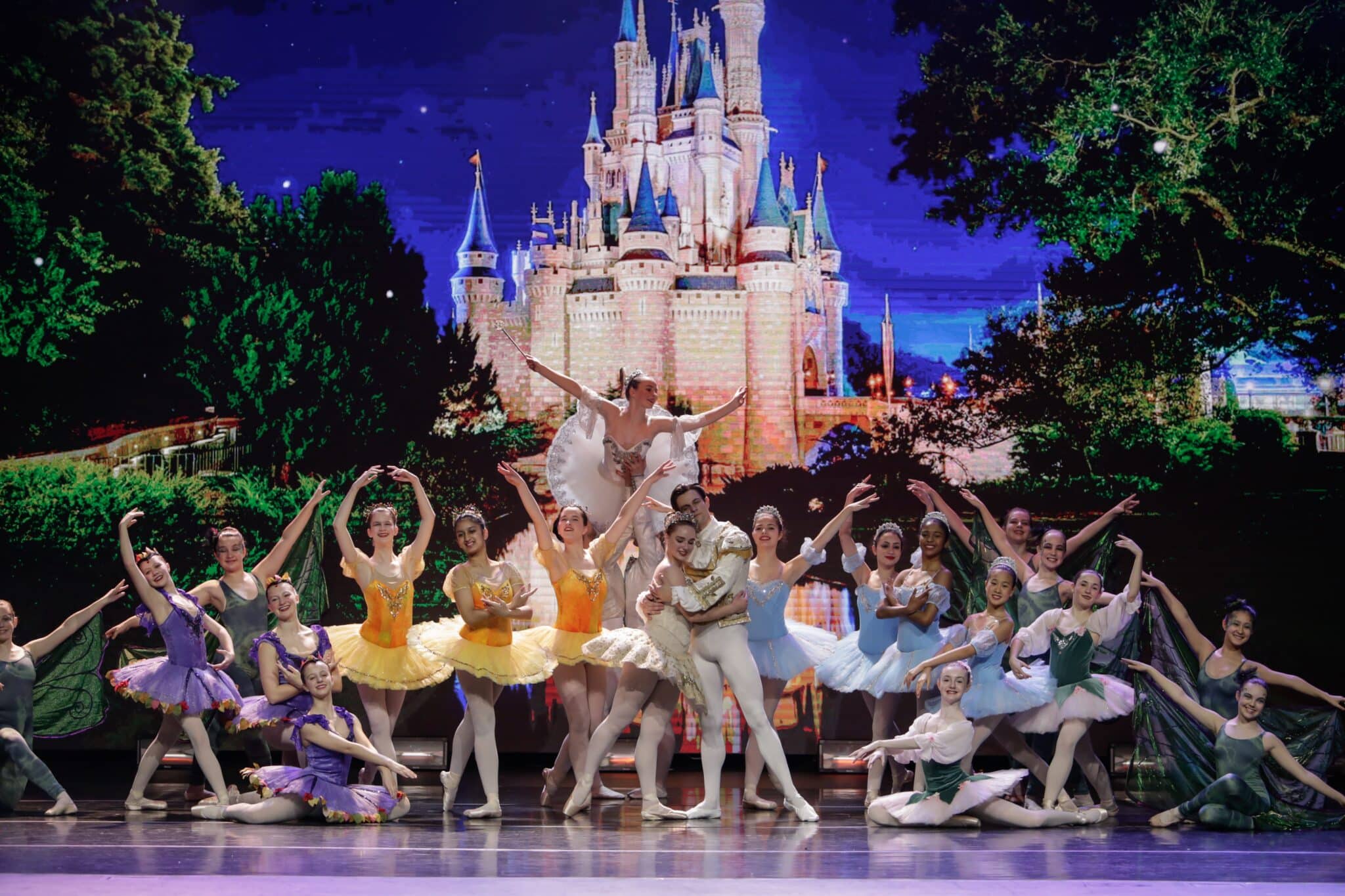
Perimeter Ballet celebrates its 30th anniversary this year. Founded in September 1995, the faith-based ballet school in Johns Creek has long been an integral part of the local arts scene and the community.
What began as a bare-bones program held in the sanctuary of Perimeter Church — on carpeted concrete floors, using the backs of chairs for barres — has grown into a respected school of more than 200 students. Ranging in age from five to 18, the young dancers at Perimeter Ballet are not only committed to the study of dance but also to using their gifts to share their faith.
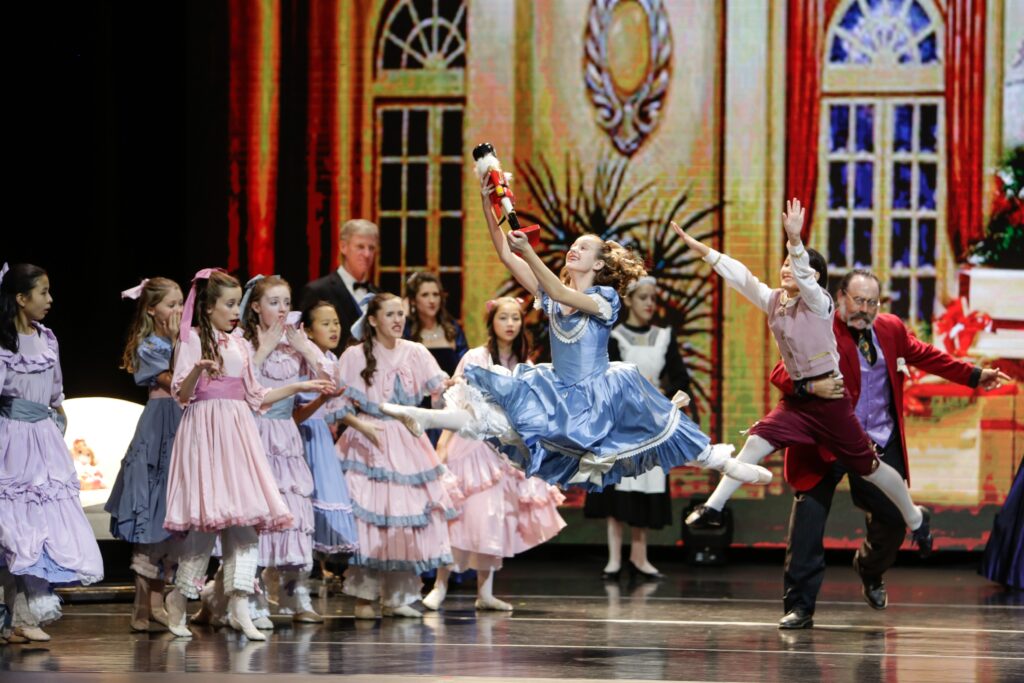
According to the program’s website, their purpose is to “emphasize character along with technique … to counter the natural tendency towards self-absorption in the ballet studio.”
They are “very committed to teaching children to dance — to develop discipline, technique and musicality. [But] the Christian instructors [also] train the students in a context that understands that there’s a reason to dance.”
30 years of dance and faith
Current director, Becky Brown, has led the school for several years, growing the program while faithfully following Perimeter Ballet’s original mission. She oversees weekly classes, summer dance camps and annual productions, including an acclaimed Spring Recital and a presentation of The Nutcracker each December.
For the 30th anniversary, Brown is excited to continue the creative work of the ballet school and share their artistry and message with a larger audience.
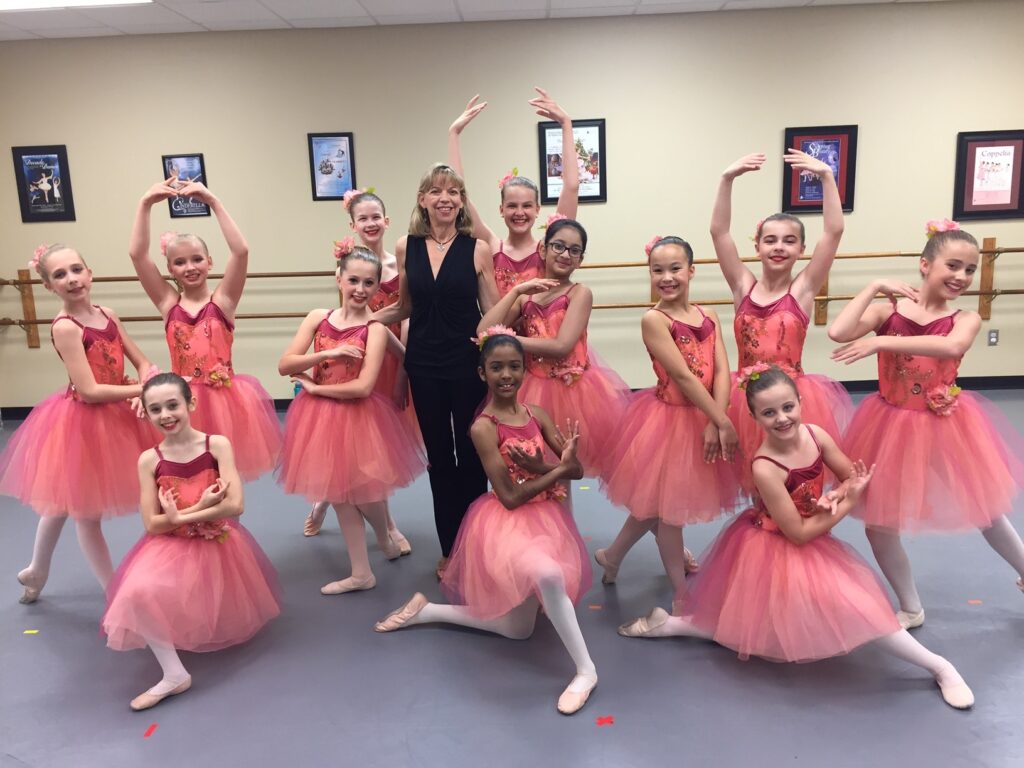
“This year will certainly be a special time for us as we celebrate and look back on 30 wonderful years of Perimeter Ballet and 20 years for our performing company, For His Glory,” she said. “We will be performing the Nutcracker December 11–13 and will have some beautiful new costumes to commemorate the occasion. We look forward to seeing many of our alumni and their families at the performance.”
Classes and instructors
Open to the community at large, weekly classes at Perimeter Ballet range from Creative Movement, PreBallet and grade-level classes for preschoolers through third grade to more advanced classes (two or more times per week) for older students.
Summer camp sessions as well as intermediate level and advanced level intensives are also offered. For the upper-level intensives, students work on their ballet technique but also branch out into jazz and other forms of dance.
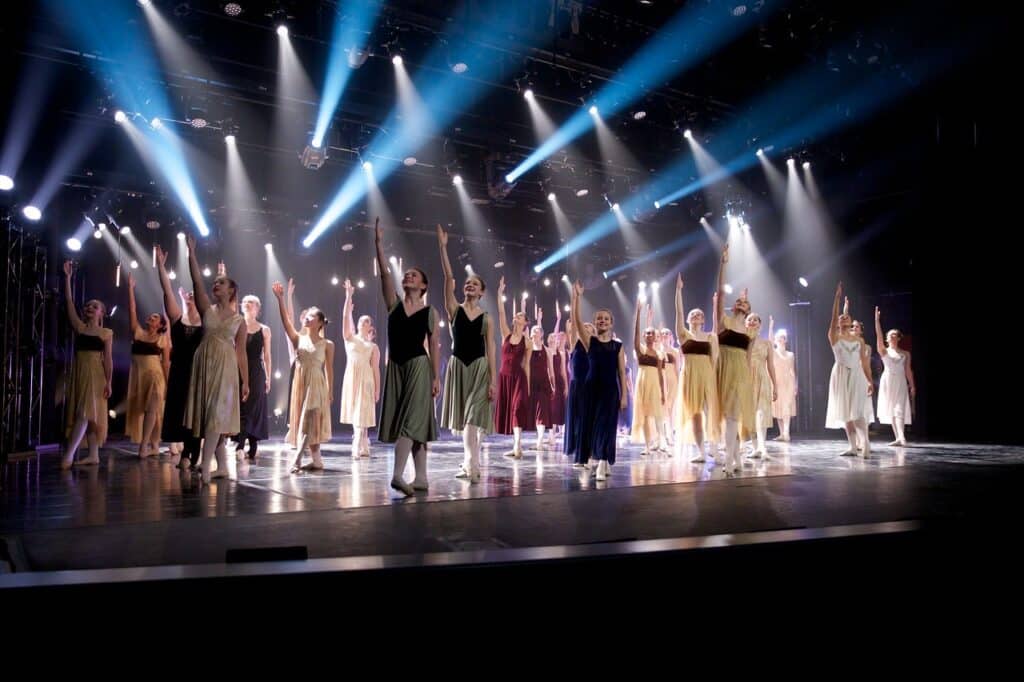
The school’s nine teachers are skilled not just as instructors but as performers themselves, having years of experience dancing with companies such as Ballet Southeast, Atlanta Ballet, North Atlanta Dance Academy and the Metropolitan Opera Ballet. They bring that experience and their Christian faith to all of their classes and interactions with the young students.
For His Glory
In addition to the work they do as a ballet school, Perimeter Ballet also has an audition-selected performance company — For His Glory.
With three levels, made up of dedicated students striving to advance their skills and reach their “God-given potential while giving glory to [their] Lord and Savior, Jesus Christ,” the program presents several high-quality productions throughout the year.
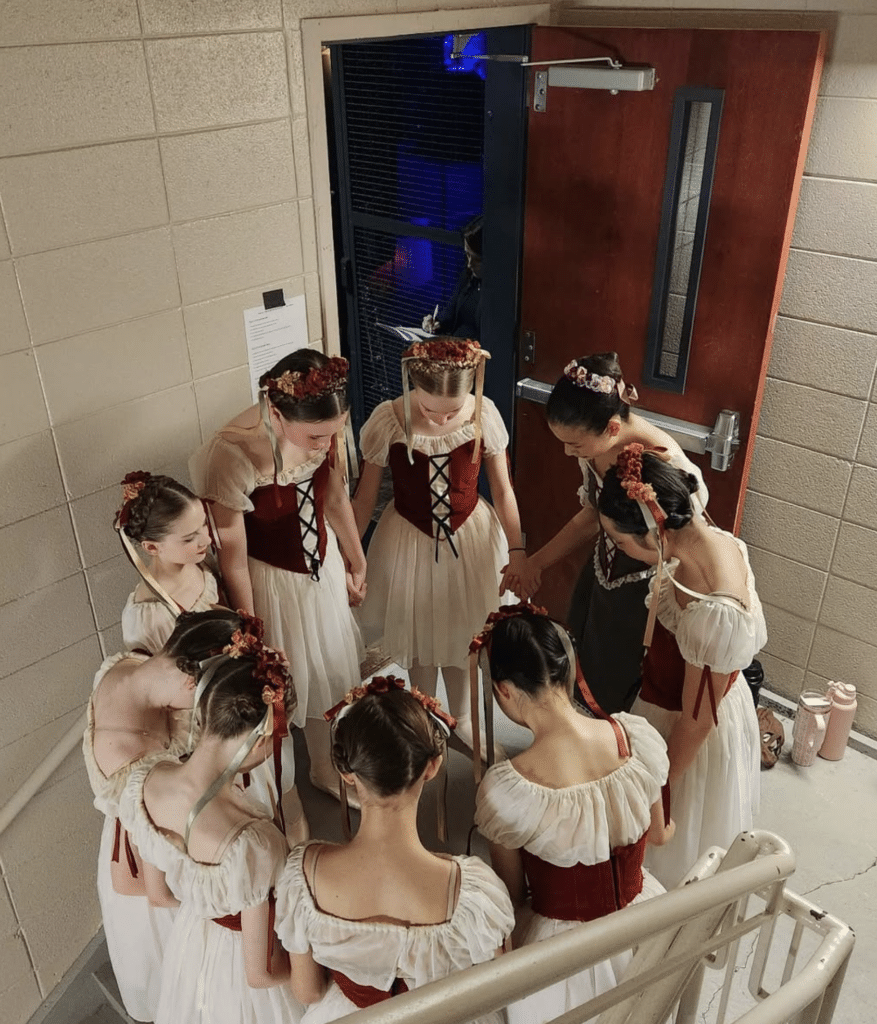
As Perimeter Ballet shares on their website: “Dancers are trained in the ballet classics as well as contemporary forms of dance, which are used in performances, worship settings and outreach. Classical ballets … in the group’s repertoire include Cinderella, Sleeping Beauty, Coppélia, excerpts from Four Seasons and La Fille Mal Gardee. In addition to Christmas and other outreach programs, For His Glory has danced internationally in London, India and Belarus.”
The group most recently performed Beauty & the Beast for two successful shows on stage at the Perimeter Church Sanctuary in early February of this year.
Impact and inspiration
All of this — the focus on faith and commitment to dance, the classes, intensives and stunning productions — have been a decades-long inspiration to the community and especially the student dancers who take part.
Many of the students stay with Perimeter Ballet for much of their childhood, learning and growing in dance as well as in their faith from elementary age through high school. That kind of involvement can clearly impact every aspect of their lives, from discipline learned to how they choose to interact with and be in the world.
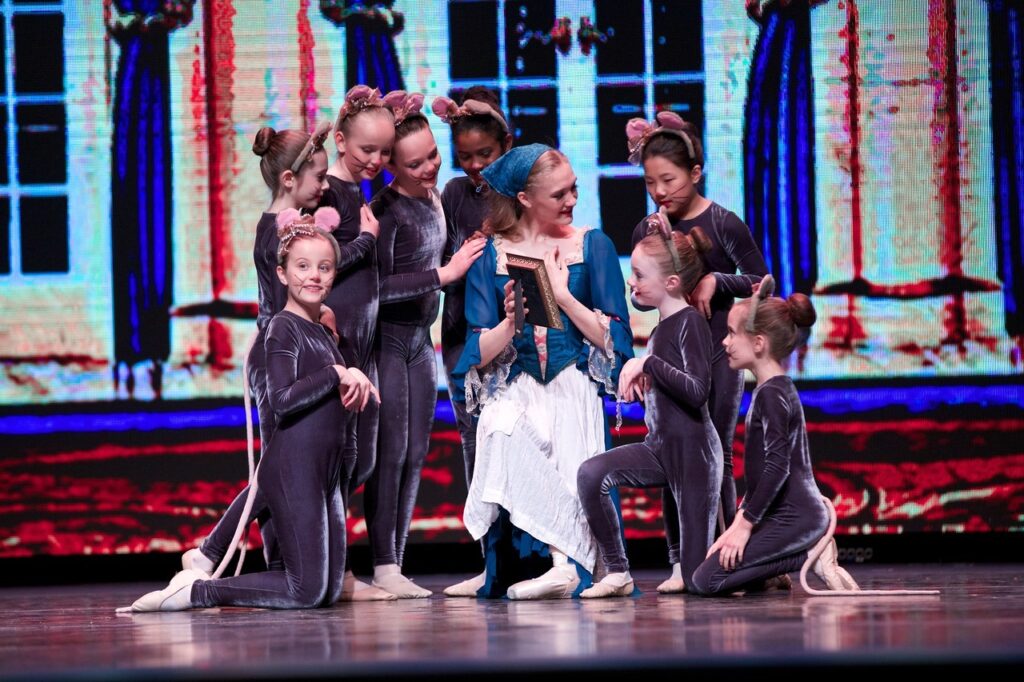
One student, Anne Bradley Maxwell has been taking ballet with the Perimeter program since she was three years old. Now a high school junior in Peachtree Corners, she’s reflected on her time at the school and in the performance company as well as Perimeter Ballet’s milestone anniversary.
“For fifteen years … I matured within this unique, local community arts program,” she shared. “This year marks the 30th anniversary of its founding … and I’m honored to say I’ve been a student for half of that era. The talented instructors in [the] program not only helped advance me into an accomplished ballerina but also into a more faithful servant of Jesus Christ using dance as a form of worship.”
A lifelong journey
“This lifelong journey included annual seasonal training, auditions, numerous external summer intensives and wonderful performances on stages across the nation and abroad, for audiences ranging from a few dozen to several thousand,” Maxwell continued.
“… Taking ballet has instilled in me a deep understanding of perseverance and resilience. Pursuing excellence in ballet required me to overcome physical and emotional challenges … I learned to seek out solutions — whether physical therapy for healing my body or prayer and reflection to rejuvenate my spirit. These experiences have strengthened my ability to face setbacks, adapt and emerge stronger.
Ballet has cultivated in me a unique combination of athleticism, discipline and creative imagination. The most elegant performances emerge from the interplay of technical mastery and creative expression. The collaborative nature of ballet, where individuals work in harmony to create something greater than themselves, informs my approach to teamwork and innovation, both in the classroom and community.”
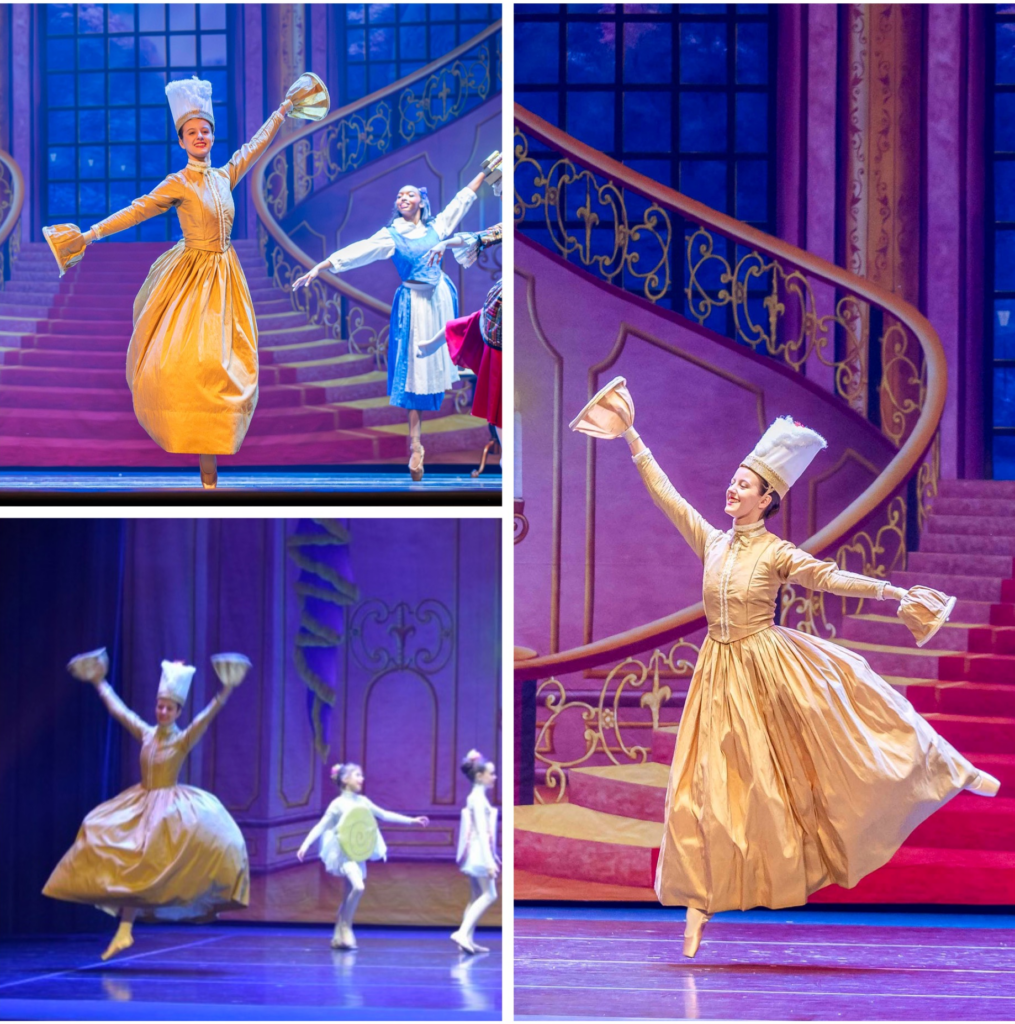
“… Ballet has [also] given me the gift of joy — both in experiencing it personally as a testament to Christ’s goodness and in sharing it with audiences. This joy, while intangible, is a powerful force that I hope to bring into my next chapters following high school. Whether through teaching movement, choreographing performances or exploring ways to expand ballet offerings, I aspire to enrich the community with the beauty and joy of dance.
… My time at Perimeter Ballet has equipped me with perseverance, discipline, creativity and a passion for sharing joy — qualities that I am excited to further cultivate as a young adult. These will not only enhance my personal journey but also contribute meaningfully to the rich tapestry of life. As I enter my senior year later this fall, I am full of gratitude for the solid foundation of technique and creative expression honoring God as the giver of my talent.”
Upcoming events
Perimeter Ballet’s Annual Spring Recital will be held in the Perimeter Church Sanctuary on Thursday, May 1 and Friday, May 2 from 7 p.m. to 8:15 p.m.
Summer camp sessions are scheduled for June and July. Registration will open on April 15.
2025-2026 classes will start in August with registration opening on April 15.
With help from Anne Bradley, the school is also planning a fundraiser event later in the year to mark the 30th anniversary.
For more information, visit perimeterballet.com.
Related
Read the Digital Edition
Subscribe
Keep Up With Peachtree Corners News
Join our mailing list to receive the latest news and updates from our team.
You have Successfully Subscribed!

From Boardrooms to the Himalayas: Vandana’s Journey to Purpose and Growing with Intention [Podcast]

Guardians of the Jukebox to Play the VoxStage on May 31

Brandon Branham Honored for Transformative Leadership in Peachtree Corners

Music Matters Productions Expands Peachtree Corners Headquarters

“Geek Culture” Shines at 2025 MomoCon

Celebration and Community: ICAGeorgia Wraps Up School Year with Two Festive Events

Vox-Pop-Uli Launches RED Initiative for Veterans’ Support

The PCBA Awards $500 to Light Up The Corners at After-Hours Event

Vox-Pop-Uli Launches RED Initiative for Veterans’ Support

The PCBA Awards $500 to Light Up The Corners at After-Hours Event

“Geek Culture” Shines at 2025 MomoCon

Celebration and Community: ICAGeorgia Wraps Up School Year with Two Festive Events

Guardians of the Jukebox to Play the VoxStage on May 31

Music Matters Productions Expands Peachtree Corners Headquarters

Brandon Branham Honored for Transformative Leadership in Peachtree Corners

From Boardrooms to the Himalayas: Vandana’s Journey to Purpose and Growing with Intention [Podcast]

Light up the Corners [Video]

Capitalist Sage: Business Leadership in Your Community [Podcast]

Cliff Bramble: A Culinary Adventure through Italy

Top 10 Brunch Places in Gwinnett County

A Hunger for Hospitality

THE CORNERS EPISODE 3 – BLAXICAN PART 1

Top 10 Indoor Things To Do This Winter

The ED Hour: What it takes to Remove Barriers from Education
